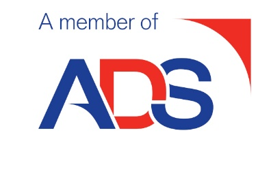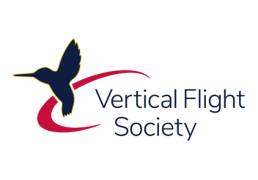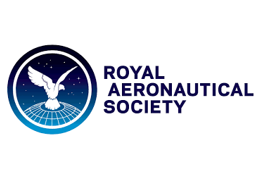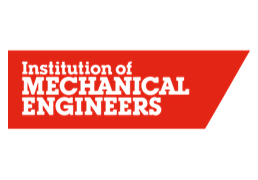My Students and Researchers
The page below is very much the story of my UK academic career. It starts in 1997 with my arrival at Glasgow University as a young Research Assistant and ends twenty years later in 2016 with my decision to leave academia and form my own company. I describe in most detail below the evolution of our technical thinking, but perhaps the astute reader will also gain an insight into how the culture and ethos of Sophrodyne Aerospace evolved from my experiences in academia - and, most profoundly, from my interactions with a small group of young men and women who looked to me for academic guidance and direction.
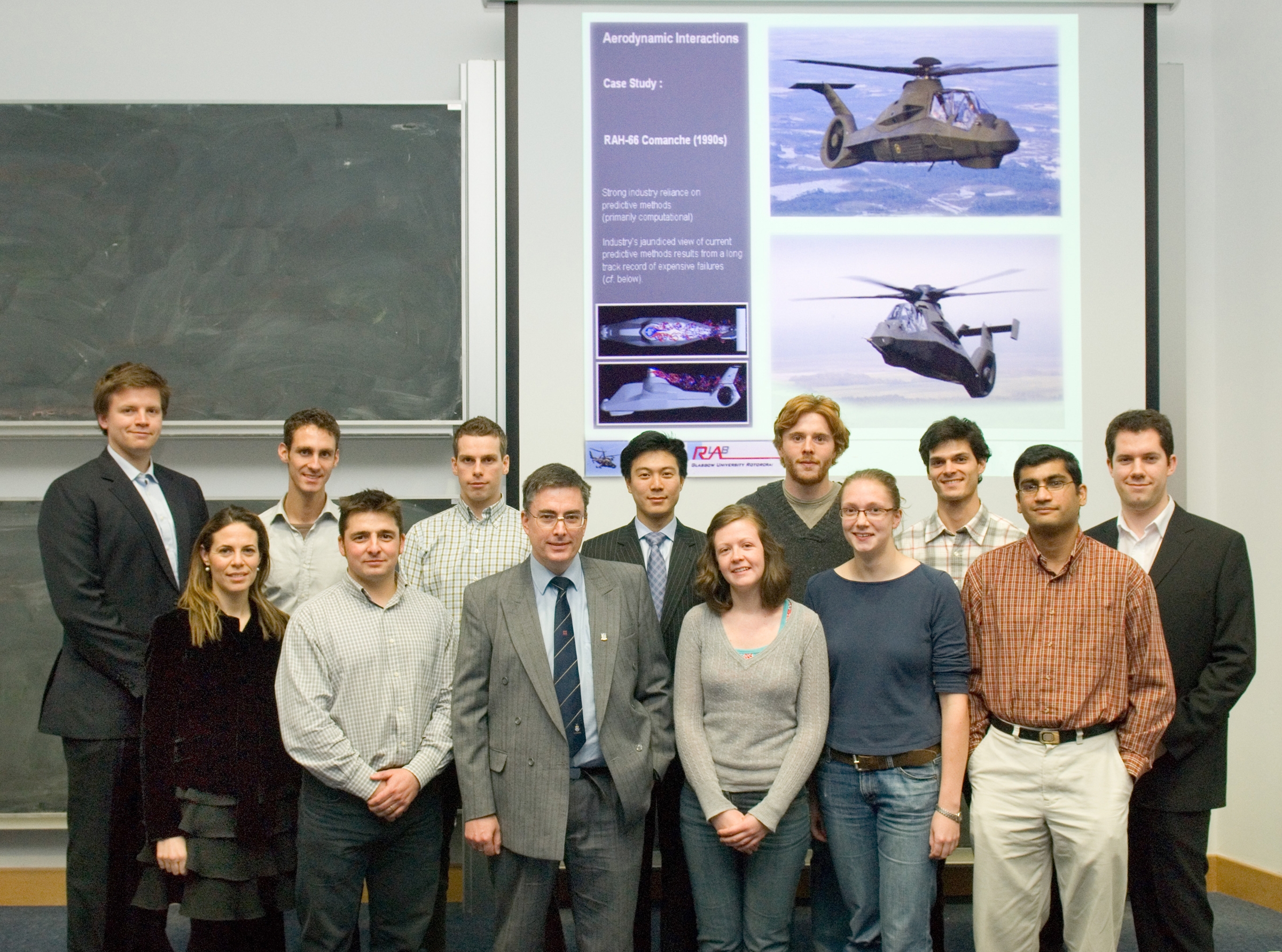
Students and Researchers at Richard's inaugural lecture, Glasgow University, November 2007.
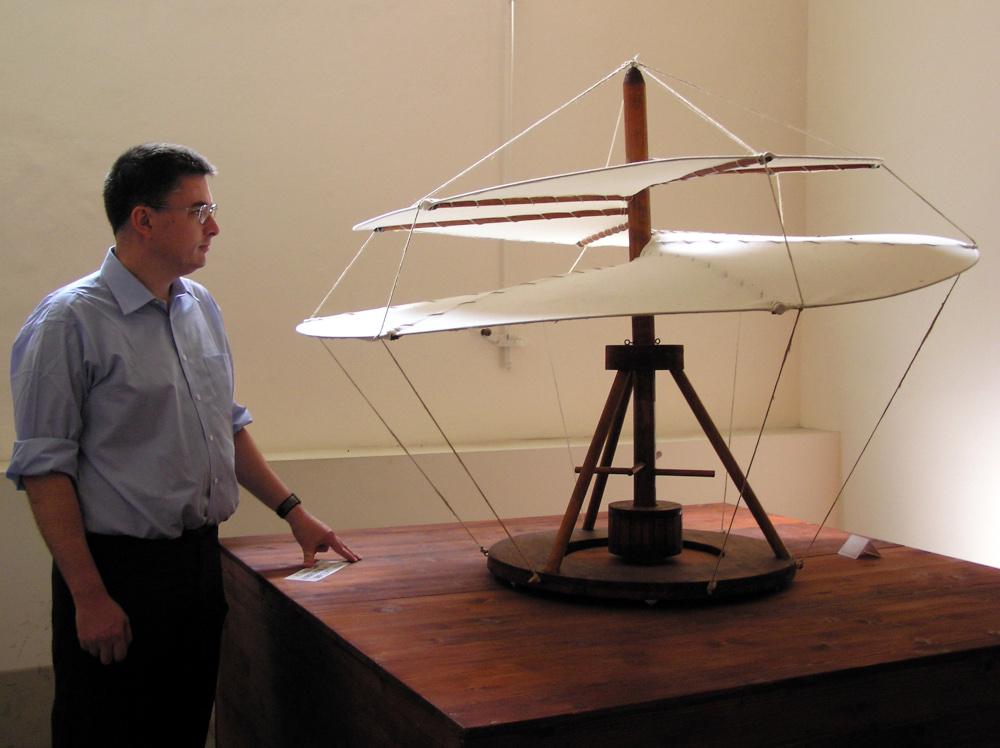
Richard Brown
Research Assistant, University of Glasgow, 1997-1999
Presently Chief Technical Officer and Director at Sophrodyne Aerospace
Fresh from completing my PhD at the University of the Witwatersrand in Johannesburg and brimming with ideas for applying advanced mathematics to difficult aerodynamic problems, I answered a particularly enticing advert in the Times Higher Education Supplement looking for a researcher interested in tackling tough mathematical problems in rotorcraft flight mechanics. Within months, I had translocated to Scotland and joined the very strong rotorcraft group at Glasgow University - where in particular Dougie Thomson and Stewart Houston were making significant contributions to the understanding of helicopter and gyroplane aeromechanics.
A pressing problem at the time was the inability of the mathematical models for the behaviour of the rotor wake that were then state of the art in flight mechanics simulations of helicopters (such as David Peters's Dynamic Inflow Model) to capture the correct phasing of the rotor flapping response to cyclic control inputs, particularly during manoeuvres. This deficiency was seriously hampering efforts to design the reliable control systems that, at least on paper at that time, held the potential to improve dramatically the safety of helicopters of all sizes and types.
Many reasons for this deficiency had been postulated, but our hunch was that the problem arose simply from inadequate representation of the dynamics, and subsequent distortion, of the rotor wake as the aircraft manoeuvred - and hence that the effect of the wake on the forces and moments that were being generated by the rotor was being mis-represented.
The early versions of a new code for the analysis of rotor wake aerodynamics, eventually to be called the Vorticity Transport Model (or VTM for short) emerged - following the realisation that some of my MSc work on computational methods for high-speed gas flows could be combined, somewhat counter-intuitively, with a re-formulation of the governing fluid dynamic equations to give a methodology that was ideally suited to modelling the very compact, vortex-dominated flows that are typically generated by helicopter rotors.
Access to Puma flight test data (via Andy McCallum, then at DERA Bedford) gave the first indications that our intuition was right - when the VTM was embedded in the Glasgow flight dynamics code the approach was much better able to predict the response of the rotor to control inputs than it could with its original Dynamic Inflow model. Subsequent theoretical analysis (largely by Prasad at Georgia Tech) allowed additional terms to be introduced into the Dynamic Inflow model to emulate these dynamic effects, and thus to this day the Dynamic Inflow formalism remains an effective tool for predicting helicopter flight dynamics.
Fresh from completing my PhD at the University of the Witwatersrand in Johannesburg and brimming with ideas for applying advanced mathematics to difficult aerodynamic problems, I answered a particularly enticing advert in the Times Higher Education Supplement looking for a researcher interested in tackling tough mathematical problems in rotorcraft flight mechanics. Within months, I had translocated to Scotland and joined the very strong rotorcraft group at Glasgow University - where in particular Dougie Thomson and Stewart Houston were making significant contributions to the understanding of helicopter and gyroplane aeromechanics.
A pressing problem at the time was the inability of the mathematical models for the behaviour of the rotor wake that were then state of the art in flight mechanics simulations of helicopters (such as David Peters's Dynamic Inflow Model) to capture the correct phasing of the rotor flapping response to cyclic control inputs, particularly during manoeuvres. This deficiency was seriously hampering efforts to design the reliable control systems that, at least on paper at that time, held the potential to improve dramatically the safety of helicopters of all sizes and types.
Many reasons for this deficiency had been postulated, but our hunch was that the problem arose simply from inadequate representation of the dynamics, and subsequent distortion, of the rotor wake as the aircraft manoeuvred - and hence that the effect of the wake on the forces and moments that were being generated by the rotor was being mis-represented.
The early versions of a new code for the analysis of rotor wake aerodynamics, eventually to be called the Vorticity Transport Model (or VTM for short) emerged - following the realisation that some of my MSc work on computational methods for high-speed gas flows could be combined, somewhat counter-intuitively, with a re-formulation of the governing fluid dynamic equations to give a methodology that was ideally suited to modelling the very compact, vortex-dominated flows that are typically generated by helicopter rotors.
Access to Puma flight test data (via Andy McCallum, then at DERA Bedford) gave the first indications that our intuition was right - when the VTM was embedded in the Glasgow flight dynamics code the approach was much better able to predict the response of the rotor to control inputs than it could with its original Dynamic Inflow model. Subsequent theoretical analysis (largely by Prasad at Georgia Tech) allowed additional terms to be introduced into the Dynamic Inflow model to emulate these dynamic effects, and thus to this day the Dynamic Inflow formalism remains an effective tool for predicting helicopter flight dynamics.
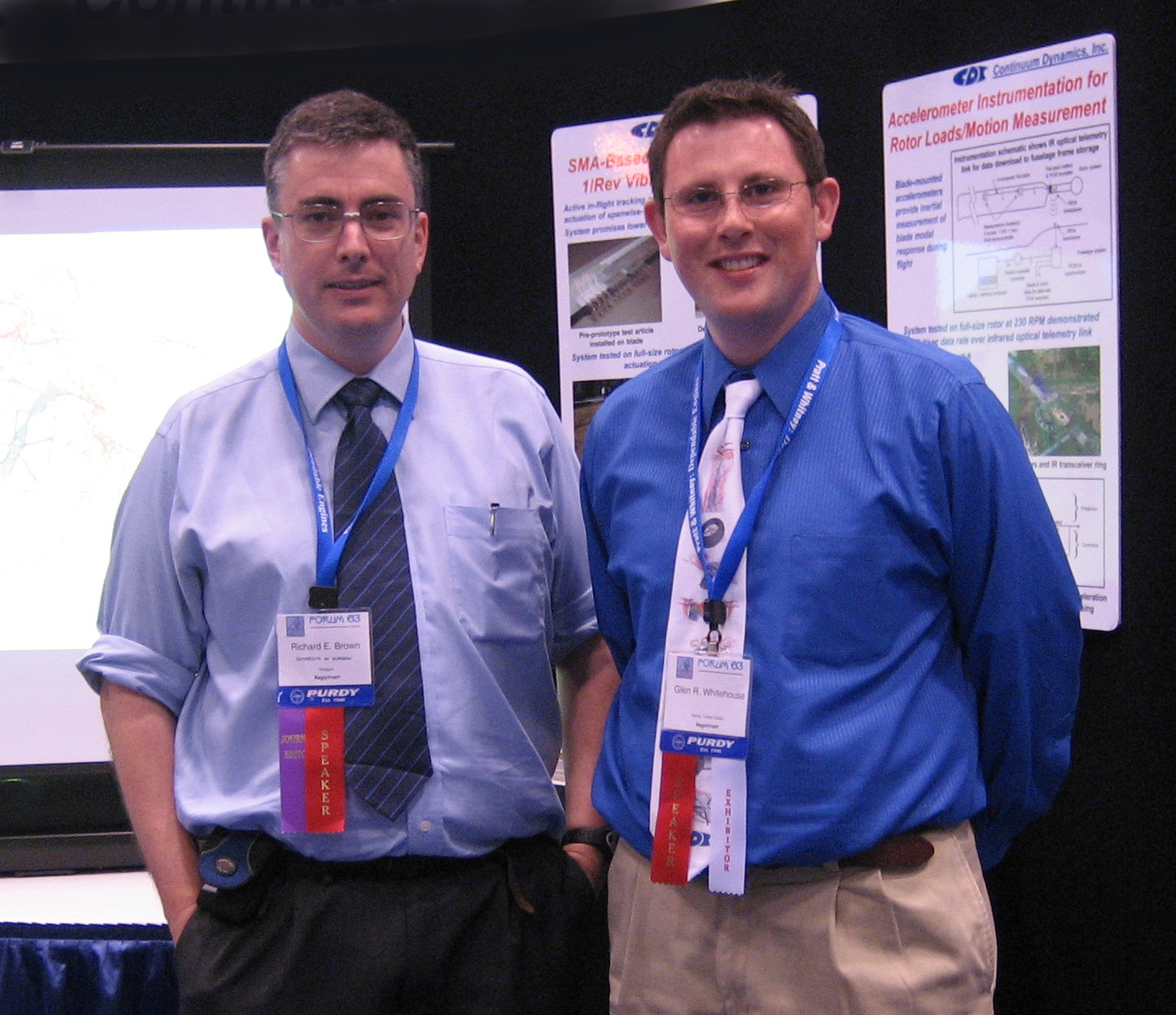
Glen Whitehouse
PhD student, Imperial College London, 2000-2003
Presently CEO and Senior Associate at Continuum Dynamics Inc
1999 brought with it a move from Glasgow to a permanent academic position at Imperial College in London. Glen soon joined me, fresh from his undergraduate degree at Clarkson University in upstate New York, as my very first PhD student. The VTM was at the time very much unproven, as was I on the UK academic scene, and together we set about trying to change that.
Title of Dissertation: Helicopter Response to Vortex Encounters in the Near-Airfield Environment
A problem of concern to helicopter operators at the time was the effect that large, strong vortices, left behind in the air by heavy passenger aircraft, might have on the dynamics of rotorcraft if these vortices were to be encountered during flight. Modelling efforts up to then had not considered to any level of fidelity the mutual distortion of the vortex and the wake of the helicopter during the interaction. This thus seemed like the ideal practical problem on which to cut the VTM's teeth.
Calculations with an early prototype of the VTM confirmed that, at least with the helicopter flying at low forward speed, the distortion of the approaching vortex by the downwash from the helicpter rotor would be such as to reduce considerably the effect of the interaction on the dynamics of the helicopter. Conversely, at high forward speed, the duration of the interaction would be so short that the mutual distortion of the rotor wake and the approaching vortex would be limited.
Up to that time the community had modelled the interaction using an approximation known as the "frozen vortex" assumption. Much to their relief, Glen's results showed that these simpler models could be relied upon in this case to produce reasonably accurate predictions of the severity of the interaction. Between these two limits, however, the VTM came particularly into its own and allowed new insights into the potential complexity of the interaction between helicopters and fixed-wing aircraft within the near-airfield environment.
In subsequently extending his work to interactions taking place close to the ground, Glen was clearly able to show the progression of the rotor wake through a succession of distinct states, as envisioned by Curtiss in his seminal series of experimental flow visualisations, thus achieving a key validation of the VTM's predictive capability.
Overall, Glen produced a set of results and insights that lent considerable weight to the potential of the VTM as a practical tool for analysing and understanding problems in rotorcraft aeromechanics. We were both extremely pleased when his paper, describing his results for the Aeronautical Journal of the Royal Aeronautical Society, was awarded the 2005 Hafner Prize for the best written contribution in field of rotary wing aircraft.
Glen set the scene for several subsequent research projects - including our work on brownout in desert conditions, our involvement in GARTEUR Action Group HC-AG 17 studying rotor wake behaviour in the presence of ground obstacles, and indeed in informing subsequent appearances in court as an expert witness.
1999 brought with it a move from Glasgow to a permanent academic position at Imperial College in London. Glen soon joined me, fresh from his undergraduate degree at Clarkson University in upstate New York, as my very first PhD student. The VTM was at the time very much unproven, as was I on the UK academic scene, and together we set about trying to change that.
Title of Dissertation: Helicopter Response to Vortex Encounters in the Near-Airfield Environment
A problem of concern to helicopter operators at the time was the effect that large, strong vortices, left behind in the air by heavy passenger aircraft, might have on the dynamics of rotorcraft if these vortices were to be encountered during flight. Modelling efforts up to then had not considered to any level of fidelity the mutual distortion of the vortex and the wake of the helicopter during the interaction. This thus seemed like the ideal practical problem on which to cut the VTM's teeth.
Calculations with an early prototype of the VTM confirmed that, at least with the helicopter flying at low forward speed, the distortion of the approaching vortex by the downwash from the helicpter rotor would be such as to reduce considerably the effect of the interaction on the dynamics of the helicopter. Conversely, at high forward speed, the duration of the interaction would be so short that the mutual distortion of the rotor wake and the approaching vortex would be limited.
Up to that time the community had modelled the interaction using an approximation known as the "frozen vortex" assumption. Much to their relief, Glen's results showed that these simpler models could be relied upon in this case to produce reasonably accurate predictions of the severity of the interaction. Between these two limits, however, the VTM came particularly into its own and allowed new insights into the potential complexity of the interaction between helicopters and fixed-wing aircraft within the near-airfield environment.
In subsequently extending his work to interactions taking place close to the ground, Glen was clearly able to show the progression of the rotor wake through a succession of distinct states, as envisioned by Curtiss in his seminal series of experimental flow visualisations, thus achieving a key validation of the VTM's predictive capability.
Overall, Glen produced a set of results and insights that lent considerable weight to the potential of the VTM as a practical tool for analysing and understanding problems in rotorcraft aeromechanics. We were both extremely pleased when his paper, describing his results for the Aeronautical Journal of the Royal Aeronautical Society, was awarded the 2005 Hafner Prize for the best written contribution in field of rotary wing aircraft.
Glen set the scene for several subsequent research projects - including our work on brownout in desert conditions, our involvement in GARTEUR Action Group HC-AG 17 studying rotor wake behaviour in the presence of ground obstacles, and indeed in informing subsequent appearances in court as an expert witness.
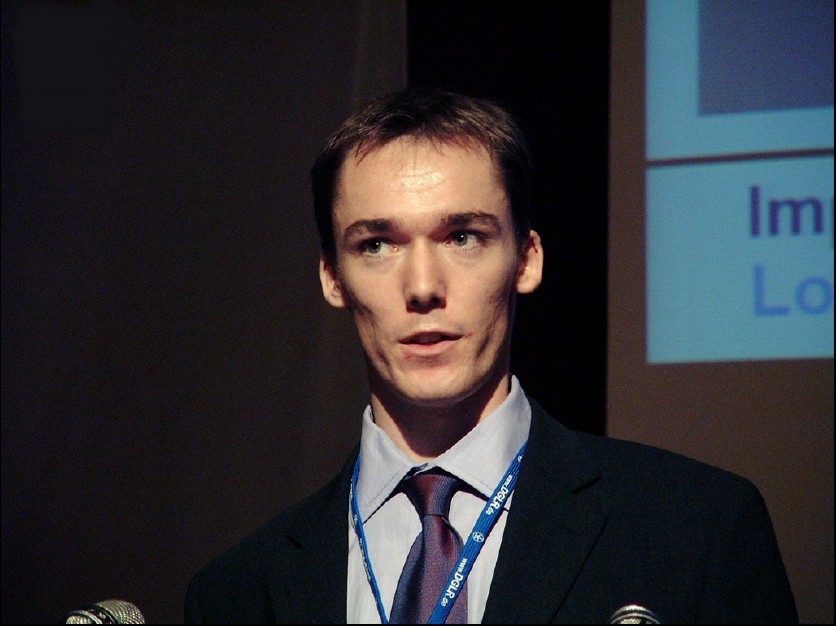
Andrew Line
PhD student, Imperial College London, 2001–2004
Presently Senior Structurer at Munich Re
Andy joined the growing rotorcraft research group at Imperial College after having spent the last few months of his undergraduate degree working for Tony Pike in the Rotor Acoustics department at Westlands in Yeovil. By that stage he had gained a reputation as an extremely bright student with an obvious passion for all things mathematical - the ideal candidate thus to help turn the VTM into a practical research tool.
Title of Dissertation: Computational Modelling of Helicopter High-Frequency Dynamics
Andy's exceptional programming skills were fundamental in turning the prototype version of the VTM into a practical tool for rotorcraft research. He made major improvements to its algorithmic structure and performed the numerous basic validations and checks that were required to establish its utility. One his most important early breakthroughs was to predict the correct response of the flapping of the rotor to changes in the forward speed of the system, matching almost perfectly Harris's well-known experimental data. His subsequent work on predicting the unsteady response of the thrust of a helicopter rotor to rapid changes in its collective pitch input (matching very closely the experimental data from Carpenter and Fridovich's foundational experiment) lent further weight to the validity of our approach.
Andy then went on to apply the new version of the VTM to upgrading the aerodynamic representation within Westlands's R150 rotor dynamics model, allowing its structural model to be forced by a much more highly resolved representation of the aerodynamic loads on the rotor blades than had been possible before. This exercise exposed some rather interesting problems at the heart of how aerodynamic models and structural dynamic models should be coupled, leading to a long and ultimately rather fruitful engagement with Westlands to try to develop and implement a range of improved methodologies that would be able to predict accurately the structural dynamics of modern helicopter rotor blades.
In a very real sense thus Andy is the father of the VTM in its modern form. Indeed, his 2005 paper in the AIAA Journal describing the fundamental mathematical structure of the VTM has for many years been at the top of our list of most-cited research works - and indeed forms an ideal introduction to our methodology.
Andy joined the growing rotorcraft research group at Imperial College after having spent the last few months of his undergraduate degree working for Tony Pike in the Rotor Acoustics department at Westlands in Yeovil. By that stage he had gained a reputation as an extremely bright student with an obvious passion for all things mathematical - the ideal candidate thus to help turn the VTM into a practical research tool.
Title of Dissertation: Computational Modelling of Helicopter High-Frequency Dynamics
Andy's exceptional programming skills were fundamental in turning the prototype version of the VTM into a practical tool for rotorcraft research. He made major improvements to its algorithmic structure and performed the numerous basic validations and checks that were required to establish its utility. One his most important early breakthroughs was to predict the correct response of the flapping of the rotor to changes in the forward speed of the system, matching almost perfectly Harris's well-known experimental data. His subsequent work on predicting the unsteady response of the thrust of a helicopter rotor to rapid changes in its collective pitch input (matching very closely the experimental data from Carpenter and Fridovich's foundational experiment) lent further weight to the validity of our approach.
Andy then went on to apply the new version of the VTM to upgrading the aerodynamic representation within Westlands's R150 rotor dynamics model, allowing its structural model to be forced by a much more highly resolved representation of the aerodynamic loads on the rotor blades than had been possible before. This exercise exposed some rather interesting problems at the heart of how aerodynamic models and structural dynamic models should be coupled, leading to a long and ultimately rather fruitful engagement with Westlands to try to develop and implement a range of improved methodologies that would be able to predict accurately the structural dynamics of modern helicopter rotor blades.
In a very real sense thus Andy is the father of the VTM in its modern form. Indeed, his 2005 paper in the AIAA Journal describing the fundamental mathematical structure of the VTM has for many years been at the top of our list of most-cited research works - and indeed forms an ideal introduction to our methodology.
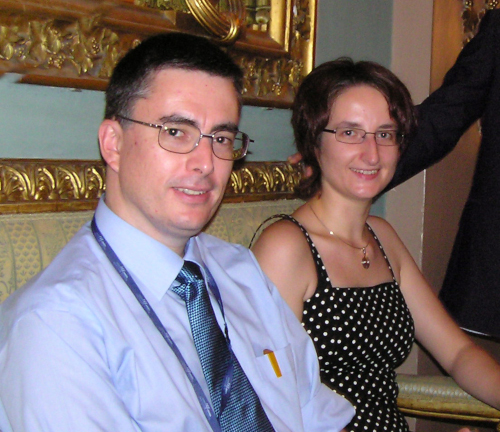
Marie-Héléne Moulet
Research Assistant, Imperial College London, 2004-2006
Presently Engineer, Laboratoire d’Acoustique de l’Université du Mans, Le Mans, France
With her background in vibrations and acoustics from her time spent as a researcher at the Automotive Acoustics Laboratory at the University of le Mans, Marie-Héléne was the ideal candidate to extend Andrew Line's work and to re-visit the way that the aerodynamic model and the structural dynamics model were integrated within the coupled VTM-R150 code.
R150 was a very practical tool, and was able to obtain very good predictions for the low-frequency structural dynamics of the advanced rotor blades that were being designed at the time. VTM however provided a description of the aerodynamic environment of the blades that was very much more highly resolved than the simple quasi-empirical approach that R150 had been designed to use. By then QinetiQ had become involved in the project. Colin Hatch and Judith Miller were able to supply us with detailed information from their wind tunnel tests which we could use to show that the VTM was representing very accurately the features of the rotor wake that are unique to these advanced blade designs - such as the formation of secondary tip vortices over part of the blades' trajectory around the rotor azimuth. The fine vortical structure created by the blades was very well resolved not only in the near-wake of the blades, but also after it had propagated, evolved and interacted multiple rotor revolutions downstream of the blades from which the vortices had originated.
It goes without saying that the aero-elasticity of rotor blades is a highly non-linear problem in which the behaviour of the fluid and the behaviour of the structure are tightly intertwined, and when this high-resolution representation of the wake was fed through into the R150 dynamics model, the result quite often was that the deflections of the blades would be over-predicted - on occasion even to the point of numerical instability.
It seemed clear to us that the form of the coupling between the aerodynamic model and the structural model was at the root of the problem, and that a more fundamental, general approach to coupling the two modules within the R150-VTM code might be necessary to achieve better results. An important first step though would be to understand in detail what was going wrong before embarking on what had the potential to turn into a very complex re-write of the interface between the two codes.
Marie-Héléne thus spent just over a year with us, documenting the deficiencies in the coupled R150-VTM methodology, and writing up her arguments in favour of a revised approach, before departing back to the world of automotive vibrations and acoustics. She was able to show that problem originated in a lack of basic conservation within the coupling approach - in retrospect the problem sounds very simple : put in plain terms, the energy contained in the strong but small aerodynamic structures in the wake, which were now being highly resolved by the VTM aerodynamic model, was being artificially aliased into the low-frequency dynamics of the blades where it was causing the numerical instabilities that we were seeing with the coupled code.
With her background in vibrations and acoustics from her time spent as a researcher at the Automotive Acoustics Laboratory at the University of le Mans, Marie-Héléne was the ideal candidate to extend Andrew Line's work and to re-visit the way that the aerodynamic model and the structural dynamics model were integrated within the coupled VTM-R150 code.
R150 was a very practical tool, and was able to obtain very good predictions for the low-frequency structural dynamics of the advanced rotor blades that were being designed at the time. VTM however provided a description of the aerodynamic environment of the blades that was very much more highly resolved than the simple quasi-empirical approach that R150 had been designed to use. By then QinetiQ had become involved in the project. Colin Hatch and Judith Miller were able to supply us with detailed information from their wind tunnel tests which we could use to show that the VTM was representing very accurately the features of the rotor wake that are unique to these advanced blade designs - such as the formation of secondary tip vortices over part of the blades' trajectory around the rotor azimuth. The fine vortical structure created by the blades was very well resolved not only in the near-wake of the blades, but also after it had propagated, evolved and interacted multiple rotor revolutions downstream of the blades from which the vortices had originated.
It goes without saying that the aero-elasticity of rotor blades is a highly non-linear problem in which the behaviour of the fluid and the behaviour of the structure are tightly intertwined, and when this high-resolution representation of the wake was fed through into the R150 dynamics model, the result quite often was that the deflections of the blades would be over-predicted - on occasion even to the point of numerical instability.
It seemed clear to us that the form of the coupling between the aerodynamic model and the structural model was at the root of the problem, and that a more fundamental, general approach to coupling the two modules within the R150-VTM code might be necessary to achieve better results. An important first step though would be to understand in detail what was going wrong before embarking on what had the potential to turn into a very complex re-write of the interface between the two codes.
Marie-Héléne thus spent just over a year with us, documenting the deficiencies in the coupled R150-VTM methodology, and writing up her arguments in favour of a revised approach, before departing back to the world of automotive vibrations and acoustics. She was able to show that problem originated in a lack of basic conservation within the coupling approach - in retrospect the problem sounds very simple : put in plain terms, the energy contained in the strong but small aerodynamic structures in the wake, which were now being highly resolved by the VTM aerodynamic model, was being artificially aliased into the low-frequency dynamics of the blades where it was causing the numerical instabilities that we were seeing with the coupled code.
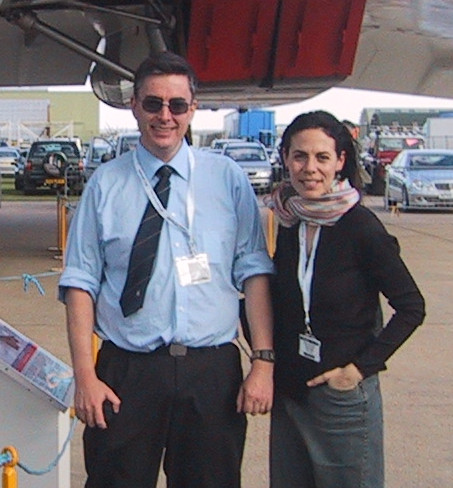
Maria Tomas Rodriguez
Research Assistant, Imperial College London, 2005-2006
Presently Senior Lecturer in Avionics and Control, City University London
At the same time as Marie-Héléne was working on the elastic dynamics of helicopter rotor blades, Maria joined the group to work on a joint project with David Limebeer and Robin Sharp in the Department of Electrical Engineering at Imperial College, funded by BAE Systems and the EPSRC, to investigate the potential of advanced mathematical modelling techniques to encapsulate the dynamics of systems that could be treated as complex arrangements of coupled rigid-body elements.
Robin Sharp was a world-leading exponent of a technique for multi-body dynamic analysis known as Kane's approach, which is based on determining the virtual power expended by the system instead of using, say, Newton's equations to describe the dynamics of the various individual rigid bodies from which the system is comprised. For even marginally-complex systems, consisting of a few interlinked bodies, this approach gives impressive benefits in terms of simplicity of formulation, especially if there are constraints on the allowable motions of the system.
The complexity of the average helicopter with its many joints and linkages, and its flapping and rotating blades, made for a very attractive test case for the approach, and particularly for Robin's "Autosim" computer code. This code was designed to generate automatically the equations of motion for complex multi-body systems, and had already achieved some notoriety in exposing the pathological behaviour that is hidden in the dynamics of most conventional motorcycles. It is well known that helicopters can be excited to produce very complex and non-linear rigid-body dynamics, and, indeed, earlier work that I had done for the US Army on blade sailing and ground resonance in conjunction with Simon Newman at Southampton University had piqued my interest in adopting a more rigorous mathematical basis for the dynamic model within the VTM.
Maria was able to adapt Autosim very successfully to encapsulating the dynamics of a helicopter with multiple rotors, each with multiple blades each in turn having flap, lag and feathering degrees of freedom. A particularly valuable achievement, given our earlier experiences, was the ability to introduce the effects of constraints - such as the presence of mechanical stops that limit the extent of movement of the rotor blades - into the model in a way that did not cause rapid 'blow-up' of the numerical solution.
Indeed, using her characterisation, Maria was able to demonstrate some very complicated dynamic behaviour, especially when small amounts of dissipation were added into the system (such as is characteristic of the lag dampers on a real helicopter's rotor blades).
A key part of the puzzle that fell into place in my mind was the realisation that these advanced dynamic approaches were a special case of the differential geometric methods that I had exploited during my PhD to analyse the dynamics of complex fluids. This led directly to a reformulation of the dynamic model within the VTM - making it very general in its mathematical formulation and highly adaptible to modelling any one of a range of potential helicopter configurations.
It has always been a fascination to me how the same basic mathematical principles repeat themselves over and over again in being able to describe the behaviour of the physical world, and indeed the generalisation of the dynamics model has proved so versatile that it has allowed the VTM (or derivations therefrom) in more recent years to be used to analyse problems as diverse as the vibration of arrays of chimneys, propeller-wing aeroelasticity and the effects of fuel sloshing on the trajectory of trans-atmospheric spaceplanes!
At the same time as Marie-Héléne was working on the elastic dynamics of helicopter rotor blades, Maria joined the group to work on a joint project with David Limebeer and Robin Sharp in the Department of Electrical Engineering at Imperial College, funded by BAE Systems and the EPSRC, to investigate the potential of advanced mathematical modelling techniques to encapsulate the dynamics of systems that could be treated as complex arrangements of coupled rigid-body elements.
Robin Sharp was a world-leading exponent of a technique for multi-body dynamic analysis known as Kane's approach, which is based on determining the virtual power expended by the system instead of using, say, Newton's equations to describe the dynamics of the various individual rigid bodies from which the system is comprised. For even marginally-complex systems, consisting of a few interlinked bodies, this approach gives impressive benefits in terms of simplicity of formulation, especially if there are constraints on the allowable motions of the system.
The complexity of the average helicopter with its many joints and linkages, and its flapping and rotating blades, made for a very attractive test case for the approach, and particularly for Robin's "Autosim" computer code. This code was designed to generate automatically the equations of motion for complex multi-body systems, and had already achieved some notoriety in exposing the pathological behaviour that is hidden in the dynamics of most conventional motorcycles. It is well known that helicopters can be excited to produce very complex and non-linear rigid-body dynamics, and, indeed, earlier work that I had done for the US Army on blade sailing and ground resonance in conjunction with Simon Newman at Southampton University had piqued my interest in adopting a more rigorous mathematical basis for the dynamic model within the VTM.
Maria was able to adapt Autosim very successfully to encapsulating the dynamics of a helicopter with multiple rotors, each with multiple blades each in turn having flap, lag and feathering degrees of freedom. A particularly valuable achievement, given our earlier experiences, was the ability to introduce the effects of constraints - such as the presence of mechanical stops that limit the extent of movement of the rotor blades - into the model in a way that did not cause rapid 'blow-up' of the numerical solution.
Indeed, using her characterisation, Maria was able to demonstrate some very complicated dynamic behaviour, especially when small amounts of dissipation were added into the system (such as is characteristic of the lag dampers on a real helicopter's rotor blades).
A key part of the puzzle that fell into place in my mind was the realisation that these advanced dynamic approaches were a special case of the differential geometric methods that I had exploited during my PhD to analyse the dynamics of complex fluids. This led directly to a reformulation of the dynamic model within the VTM - making it very general in its mathematical formulation and highly adaptible to modelling any one of a range of potential helicopter configurations.
It has always been a fascination to me how the same basic mathematical principles repeat themselves over and over again in being able to describe the behaviour of the physical world, and indeed the generalisation of the dynamics model has proved so versatile that it has allowed the VTM (or derivations therefrom) in more recent years to be used to analyse problems as diverse as the vibration of arrays of chimneys, propeller-wing aeroelasticity and the effects of fuel sloshing on the trajectory of trans-atmospheric spaceplanes!

Sébastien Mounoury
Research Assistant, University of Glasgow, 2007-2008
Presently Compressor Development Manager at Dunham-Bush Ltd
Sébastien was Marie-Héléne's very able successor, having joined the rotorcraft group at Glasgow University after having amassed a great deal of experience in non-linear aerolasticity, particularly as applied to the modelling and understanding of the dynamics of yacht sails, during his time as an instructor at the Institut de Recherche de l’École Navale in Brest, France.
The new dynamic model within the VTM led almost directly to the break-through that was required to solve the ongoing problems that we were experiencing with the model for the flexible elements within the VTM's dynamic representation of the helicopter. Sébastien agreed with me that there seemed to be little point in attempting to rectify the deficiencies in the coupled R150-VTM model, given that it could not easily be extended to model the blade dynamics at the high frequencies necessary to absorb the energy from the highly-resolved VTM wake. Instead we worked directly within the VTM itself to create a representation of the dynamics of the rotor blades based on an energy-conserving finite-element approach.
The advantage of this approach seemed very clearly to be that it would give a model that was entirely consistent with the accuracy with which the aerodynamics of the rotor blades was already being represented, and also that the new model would fit comfortably within, and indeed exploit, the new dynamic formulation within the VTM that had come about as a result of Maria's work. Fortunately our sponsors were receptive to our approach, and our hunch was vindicated when Sébastien was able to demonstrate results that, although still not perfect by any means, matched the test cases for our model with a far higher degree of accuracy than even the original R150 model.
As such, Sébastien made a fundamental contribution to the technical functionality of the VTM. Perhaps more importantly however, he helped create a new modelling capability that, although perhaps not being exactly of the form that was originally envisioned when the project had begun many years earlier, had ended up addressing very satisfactorily our industrial partners' requirements.
Sébastien's approach was highly original. During the course of his work he had taken on board and absorbed very deeply the lessons of the past together with the experiences of his co-workers and sponsors, but the eventual outcome of the project was a solution that was entirely innovativative and independent of legacy thinking.
Many have been the occasions since where we have adopted a position based on our independent analysis and have been rewarded for not falling into the trap of accepting the 'conventional wisdom' at face value. In such circumstances one can only argue from a position of strength if you understand your tools down to the last line of code - a situation made a lot easier if you have written your codes yourself.
Sébastien was Marie-Héléne's very able successor, having joined the rotorcraft group at Glasgow University after having amassed a great deal of experience in non-linear aerolasticity, particularly as applied to the modelling and understanding of the dynamics of yacht sails, during his time as an instructor at the Institut de Recherche de l’École Navale in Brest, France.
The new dynamic model within the VTM led almost directly to the break-through that was required to solve the ongoing problems that we were experiencing with the model for the flexible elements within the VTM's dynamic representation of the helicopter. Sébastien agreed with me that there seemed to be little point in attempting to rectify the deficiencies in the coupled R150-VTM model, given that it could not easily be extended to model the blade dynamics at the high frequencies necessary to absorb the energy from the highly-resolved VTM wake. Instead we worked directly within the VTM itself to create a representation of the dynamics of the rotor blades based on an energy-conserving finite-element approach.
The advantage of this approach seemed very clearly to be that it would give a model that was entirely consistent with the accuracy with which the aerodynamics of the rotor blades was already being represented, and also that the new model would fit comfortably within, and indeed exploit, the new dynamic formulation within the VTM that had come about as a result of Maria's work. Fortunately our sponsors were receptive to our approach, and our hunch was vindicated when Sébastien was able to demonstrate results that, although still not perfect by any means, matched the test cases for our model with a far higher degree of accuracy than even the original R150 model.
As such, Sébastien made a fundamental contribution to the technical functionality of the VTM. Perhaps more importantly however, he helped create a new modelling capability that, although perhaps not being exactly of the form that was originally envisioned when the project had begun many years earlier, had ended up addressing very satisfactorily our industrial partners' requirements.
Sébastien's approach was highly original. During the course of his work he had taken on board and absorbed very deeply the lessons of the past together with the experiences of his co-workers and sponsors, but the eventual outcome of the project was a solution that was entirely innovativative and independent of legacy thinking.
Many have been the occasions since where we have adopted a position based on our independent analysis and have been rewarded for not falling into the trap of accepting the 'conventional wisdom' at face value. In such circumstances one can only argue from a position of strength if you understand your tools down to the last line of code - a situation made a lot easier if you have written your codes yourself.
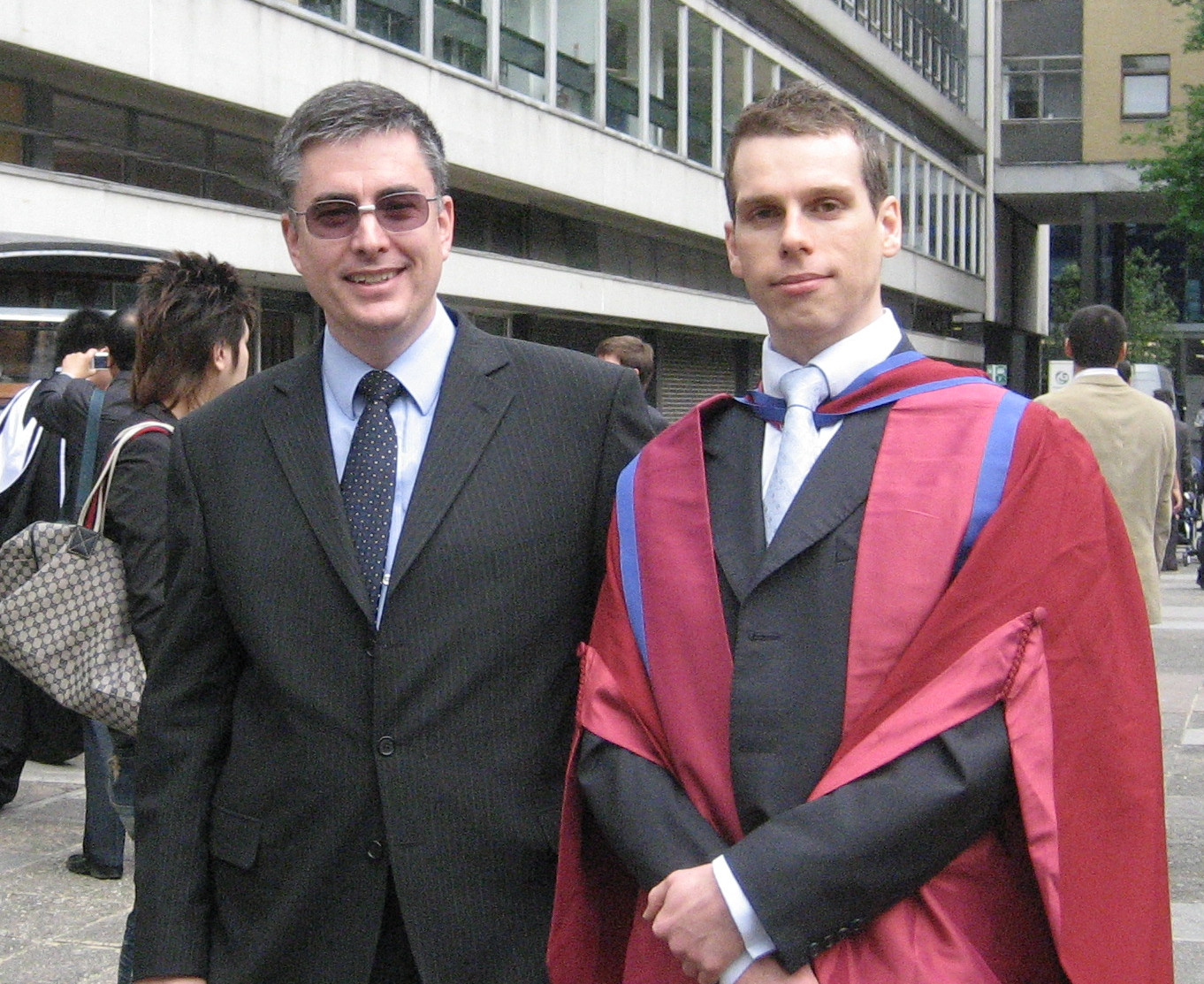
Gary Ahlin
PhD student, Imperial College London, 2003–2007
Presently Principal Aerodynamicist at McLaren Racing
In April 2000, one of the new V-22 Osprey tiltrotor aircraft, then under low-rate initial production for the US Marines, crashed at Marana, near Tucson, Arizona, killing all seventeen troops on board. Attention was focused on the possibility that a somewhat obscure and poorly-understood instability in the dynamics of the rotor wake, known as the Vortex Ring State (or VRS), had been exacerbated by the particular design of the aircraft and had been instrumental in the crash.
I very quickly found myself in the company of a small group of like-minded academics who felt that we could contribute in some small way by helping to understand the underlying aerodynamic phenomena - very little published information was available at the time besides some small-scale model data produced in the 1960s. In collaboration with John Perry, ex Westlands Chief Aerodynamicist, Simon Newman at Southampton University, and Gordon Leishman at Maryland University, we developed a new, simple, semi-empirical model founded on mathematical reasoning and calibrated against the very limited set of experimental data that was then available, that would encapsulate the range of flight conditions that would lead to the onset of the VRS for a helicopter of given size and weight.
I presented our inital findings of a link between the geometry of the rotors and the severity of the VRS phenomenon at the 2002 European Rotorcraft Forum in Bristol. The work was topical and relevant enough for us to be awarded the Cheeseman Prize for the best paper at the conference, and this gave us the opportunity to take the work to be presented in the lion's den, so to speak, at a special session of the Annual National Forum of the American Helicopter Society, held in Phoenix, Arizona, in May 2003. Although the Marines in attendance were initially somewhat apprehensive as to what our work might reveal, the presentation, fortunately, was well received - and indeed attracted broad interest from the international helicopter community who by this stage were taking the problem very seriously.
The fluid dynamics underpinning the VRS were still not very well understood, however, and we were fortunate to obtain an EPSRC studentship to study the subject further. Gary, having just obtained top marks for his MSc in Computational Fluid Dynamics and Fluid Structure Interaction at Imperial College, caught my attention as the ideal candidate to take on the job of pinning down the fluid dynamic origins of the VRS.
Title of Dissertation: The Fluid Dynamics of the Helicopter Vortex Ring Phenomenon
Gary's approach to the problem was marked by the eye for detail and nuance that was absolutely necessary to discover the fluid dynamic origins of the VRS. A set of index runs of the VTM, some of them stretching over several months of computer time, were necessary to wash out the effects of initial conditions on the simulations. Painstaking frame-by-frame analysis of the output of these simulations eventually exposed the true mechanism at the heart of the VRS as the non-linear growth of, and interaction between, two different instability modes - both of which had been reasonably well studied before, albeit in a somewhat different context.
Gary's results showed that the conventional description of the onset of the VRS as "the rotor descending into its own wake" was only partially correct at best, and his subsequent analysis was able to remove much of the empiricism from our earlier model for predicting the onset of VRS. The final element of his work was to extend the analysis to the unsteady flight conditions that had precipitated the Marana crash in the first instance.
Simon Newman and I were honoured to be able to present our final conclusions at an evening lecture at the Royal Aeronautical Society. To our great surprise, several military pilots approached us after the lecture to tell us of their encounters with this dangerous and upsetting flight dynamic phenomenon. The VRS was definitely not as obscure a flight dynamic problem as some protagonists within the rotorcraft community might have had us believe!
Although much work remains to be done to understand the Vortex Ring State in its entirety, Gary's work made a significant contribution to the safe operation of all forms of rotorcraft. We were particularly pleased when we learned that the Bell team had used our published work to set out the flight test procedure for the V-22 in subsequently clearing it for re-entry into service - following some work, of course, to remedy its behaviour in the descending flight conditions that were most likely to lead to the onset of the VRS in the first place.
In April 2000, one of the new V-22 Osprey tiltrotor aircraft, then under low-rate initial production for the US Marines, crashed at Marana, near Tucson, Arizona, killing all seventeen troops on board. Attention was focused on the possibility that a somewhat obscure and poorly-understood instability in the dynamics of the rotor wake, known as the Vortex Ring State (or VRS), had been exacerbated by the particular design of the aircraft and had been instrumental in the crash.
I very quickly found myself in the company of a small group of like-minded academics who felt that we could contribute in some small way by helping to understand the underlying aerodynamic phenomena - very little published information was available at the time besides some small-scale model data produced in the 1960s. In collaboration with John Perry, ex Westlands Chief Aerodynamicist, Simon Newman at Southampton University, and Gordon Leishman at Maryland University, we developed a new, simple, semi-empirical model founded on mathematical reasoning and calibrated against the very limited set of experimental data that was then available, that would encapsulate the range of flight conditions that would lead to the onset of the VRS for a helicopter of given size and weight.
I presented our inital findings of a link between the geometry of the rotors and the severity of the VRS phenomenon at the 2002 European Rotorcraft Forum in Bristol. The work was topical and relevant enough for us to be awarded the Cheeseman Prize for the best paper at the conference, and this gave us the opportunity to take the work to be presented in the lion's den, so to speak, at a special session of the Annual National Forum of the American Helicopter Society, held in Phoenix, Arizona, in May 2003. Although the Marines in attendance were initially somewhat apprehensive as to what our work might reveal, the presentation, fortunately, was well received - and indeed attracted broad interest from the international helicopter community who by this stage were taking the problem very seriously.
The fluid dynamics underpinning the VRS were still not very well understood, however, and we were fortunate to obtain an EPSRC studentship to study the subject further. Gary, having just obtained top marks for his MSc in Computational Fluid Dynamics and Fluid Structure Interaction at Imperial College, caught my attention as the ideal candidate to take on the job of pinning down the fluid dynamic origins of the VRS.
Title of Dissertation: The Fluid Dynamics of the Helicopter Vortex Ring Phenomenon
Gary's approach to the problem was marked by the eye for detail and nuance that was absolutely necessary to discover the fluid dynamic origins of the VRS. A set of index runs of the VTM, some of them stretching over several months of computer time, were necessary to wash out the effects of initial conditions on the simulations. Painstaking frame-by-frame analysis of the output of these simulations eventually exposed the true mechanism at the heart of the VRS as the non-linear growth of, and interaction between, two different instability modes - both of which had been reasonably well studied before, albeit in a somewhat different context.
Gary's results showed that the conventional description of the onset of the VRS as "the rotor descending into its own wake" was only partially correct at best, and his subsequent analysis was able to remove much of the empiricism from our earlier model for predicting the onset of VRS. The final element of his work was to extend the analysis to the unsteady flight conditions that had precipitated the Marana crash in the first instance.
Simon Newman and I were honoured to be able to present our final conclusions at an evening lecture at the Royal Aeronautical Society. To our great surprise, several military pilots approached us after the lecture to tell us of their encounters with this dangerous and upsetting flight dynamic phenomenon. The VRS was definitely not as obscure a flight dynamic problem as some protagonists within the rotorcraft community might have had us believe!
Although much work remains to be done to understand the Vortex Ring State in its entirety, Gary's work made a significant contribution to the safe operation of all forms of rotorcraft. We were particularly pleased when we learned that the Bell team had used our published work to set out the flight test procedure for the V-22 in subsequently clearing it for re-entry into service - following some work, of course, to remedy its behaviour in the descending flight conditions that were most likely to lead to the onset of the VRS in the first place.
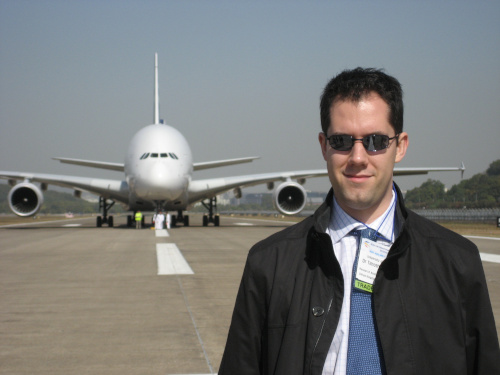
Timothy Fletcher
PhD student, Imperial College London, 2004–2008,
Research Assistant, University of Glasgow, 2008-2010
Research Assistant, University of Glasgow, 2008-2010
Presently Lead Data Engineer, SSE Renewables
Our work on the Vortex Ring State suggested that aerodynamic interactions between the twin side-by-side rotors of the V-22 may have played a significant role in exacerbating the severity of that aircraft's response to the onset of the underlying instability in the wakes of its rotors.
In fact, the compact nature of most helicopter configurations makes them susceptible to all manner of flight dynamic foibles that result from the interaction between the wakes that are produced by the rotors, and indeed also from the interactions between these wakes and various other components of the vehicle - such as their tail fins, stabilisers and so on. Many helicopters (such as, for instance, the Hughes/Boeing Apache) have gone through multiple, expensive, revisions to their geometry, often at flight-test stage, to cure the effects of such interactions. We knew from the outset that a model that could predict the likely occurrence of these interaction-related effects - preferably before metal was even cut on a prototype airframe - would be a distinct asset to the rotorcraft community.
Tim joined the rotorcraft group at Imperial College fresh from obtaining a first-class MEng degree in Aerospace Engineering from Southampton University. The main aim of his research was to determine whether a high-fidelity numerical model such as the VTM could be made to reproduce the classical range of interaction-related aerodynamic effects that had been catalogued by helicopter manufacturers over the years. An even better outcome to the research would be if such a model could be used to understand the origins and causes of the associated flight-dynamic pathologies or to establish design guidelines that could potentially save manufacturers time, effort and expense.
Title of Dissertation: The Effect of Aerodynamic Interactions on Helicopter Flight Mechanics
Tim was able to demonstrate a variety of such effects using the VTM, including such classic bugbears of the helicopter world as the sensitivity of the performance of the helicopter's tail rotor to its direction of rotation, and the onset of tail-shake and stabiliser buffet and its dependence on on the location of the tail surfaces relative to the plane of the main rotor as well as to the forward speed of the helicopter. He was also able to demonstrate the VTM's ability to capture a particularly pernicious flight condition, known as "loss of tail rotor effectiveness" and was able to attribute it to the premature onset of the Vortex Ring State on the tail rotor when in sidewards or turning flight and the wake of the tail rotor becomes partially immersed in that of the main rotor.
Tim's work added to the body of material supporting the effectiveness of the approach taken within the steadily-growing VTM computational framework, and showed perhaps for the first time the utility of the approach not only in being able to predict the gross characteristics of a rotorcraft's aerodynamics but also in being able to predict some of the more subtle effects whose character was more directly dependent on the specifics of the particular helicopter being analysed.
Indeed, the utility of the VTM in being able to resolve configuration-dependent issues that are often missed using the traditional suite of design methods is becoming highly relevant again, albeit in a new context, as worldwide interest increases in designing configurations that are compact enough to serve as urban air taxis. Indeed, where the promoters of these vehicles have ventured beyond superficial performance-level analysis to support the validity of their concepts, the VTM has played an important role in exposing some of the second-order consequences of adopting their particular configuration that might have bedeviled the development of their concept into a fully-fledged product had they not been iddentified and addressed at an early stage.
The companies Sophrodyne has worked with in this field have all been appreciative of the detailed predictive capability of the VTM - on the principle that it is so much cheaper and safer that these potential issues be exposed at design level instead of only once metal (or, more likely these days, composite fibre) has been cut.
Our work on the Vortex Ring State suggested that aerodynamic interactions between the twin side-by-side rotors of the V-22 may have played a significant role in exacerbating the severity of that aircraft's response to the onset of the underlying instability in the wakes of its rotors.
In fact, the compact nature of most helicopter configurations makes them susceptible to all manner of flight dynamic foibles that result from the interaction between the wakes that are produced by the rotors, and indeed also from the interactions between these wakes and various other components of the vehicle - such as their tail fins, stabilisers and so on. Many helicopters (such as, for instance, the Hughes/Boeing Apache) have gone through multiple, expensive, revisions to their geometry, often at flight-test stage, to cure the effects of such interactions. We knew from the outset that a model that could predict the likely occurrence of these interaction-related effects - preferably before metal was even cut on a prototype airframe - would be a distinct asset to the rotorcraft community.
Tim joined the rotorcraft group at Imperial College fresh from obtaining a first-class MEng degree in Aerospace Engineering from Southampton University. The main aim of his research was to determine whether a high-fidelity numerical model such as the VTM could be made to reproduce the classical range of interaction-related aerodynamic effects that had been catalogued by helicopter manufacturers over the years. An even better outcome to the research would be if such a model could be used to understand the origins and causes of the associated flight-dynamic pathologies or to establish design guidelines that could potentially save manufacturers time, effort and expense.
Title of Dissertation: The Effect of Aerodynamic Interactions on Helicopter Flight Mechanics
Tim was able to demonstrate a variety of such effects using the VTM, including such classic bugbears of the helicopter world as the sensitivity of the performance of the helicopter's tail rotor to its direction of rotation, and the onset of tail-shake and stabiliser buffet and its dependence on on the location of the tail surfaces relative to the plane of the main rotor as well as to the forward speed of the helicopter. He was also able to demonstrate the VTM's ability to capture a particularly pernicious flight condition, known as "loss of tail rotor effectiveness" and was able to attribute it to the premature onset of the Vortex Ring State on the tail rotor when in sidewards or turning flight and the wake of the tail rotor becomes partially immersed in that of the main rotor.
Tim's work added to the body of material supporting the effectiveness of the approach taken within the steadily-growing VTM computational framework, and showed perhaps for the first time the utility of the approach not only in being able to predict the gross characteristics of a rotorcraft's aerodynamics but also in being able to predict some of the more subtle effects whose character was more directly dependent on the specifics of the particular helicopter being analysed.
Indeed, the utility of the VTM in being able to resolve configuration-dependent issues that are often missed using the traditional suite of design methods is becoming highly relevant again, albeit in a new context, as worldwide interest increases in designing configurations that are compact enough to serve as urban air taxis. Indeed, where the promoters of these vehicles have ventured beyond superficial performance-level analysis to support the validity of their concepts, the VTM has played an important role in exposing some of the second-order consequences of adopting their particular configuration that might have bedeviled the development of their concept into a fully-fledged product had they not been iddentified and addressed at an early stage.
The companies Sophrodyne has worked with in this field have all been appreciative of the detailed predictive capability of the VTM - on the principle that it is so much cheaper and safer that these potential issues be exposed at design level instead of only once metal (or, more likely these days, composite fibre) has been cut.
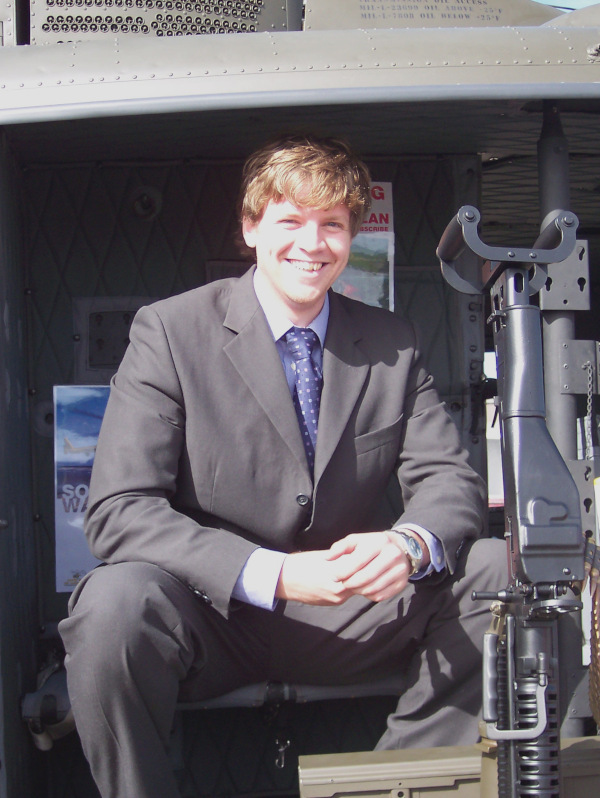
Adam Kenyon
PhD student, Imperial College London, 2004–2007
Presently Head of Aerodynamics at Williams Formula 1
Adam joined the rotorcraft group at Imperial College at the same time as Tim, after completing his MEng in Aerospace Engineering at Cambridge University. Adam and Tim's work ran in parallel - in the sense that, in much the same way as rotor wake interactions can cause flight dynamic problems, interactions between the wake of the main rotor and the bluff fuselage of the helicopter are also responsible for a number of unwelcome physical effects - such as canopy drumming, structural fatigue and various other forms of low-frequency dynamics created by excitation of the flow over the fuselage by the passage of the individual vortical structures that comprise the rotor wake. Indeed, the distortion of the rotor wake as it passes over the fuselage can also have an appreciable effect on the loads and vibration that are produced on the rotor itself.
These effects are notoriously difficult to model accurately using design-level techniques, and, as in the case of Sikorsky's famous Blackhawk, many helicopters have had to undergo expensive modification at flight test stage to rectify problems caused by overly severe aerodynamic interaction between the rotor and the fuselage.
Title of Dissertation: Helicopter Rotor-Fuselage Aerodynamic Interactions
Whereas Tim's work concentrated on interactions between the lifting surfaces of the helicopter and its rotors, Adam was able to build a sophisticated model for the bluff-body aerodynamics of the fuselage in the presence of multiple rotor wakes. Essential to correct representation of the fuselage aerodynamics was to add the set of terms into the pressure equation that allow it to capture the effects of unsteadiness in the motion of the vehicle or in the flow itself as well as the close passage of vortices just above its surface. Indeed, these and further additions to the model to allow it to represent lifting effects turned the VTM into a very general model which we could use to understand the unsteady aerodynamics and flight dynamics of both fixed-winged aircraft as well as helicopters.
We were very fortunate to be allowed access to the full database of Susan Althoff-Gorton's group at NASA's Langley Research Center, and with the help of Doug Boyd in figuring out some of the foibles in the data, Adam was able to perform a comprehensive validation of the VTM's predictions against the well-known ROBIN dataset describing the coupled aerodynamic behaviour of a particularly well-defined model helicopter rotor and fuselage. The VTM's strengths were demonstrated in being able to predict extremely accurately the details of the vortex structure within the rotor wake and the distribution of the inflow along the blades of the rotor, as well as being able to characterise correctly the pressure signatures that were generated by the individual wake vortices as they impacted the fuselage and made their way along the tailboom.
Adam's work thus advanced our confidence in our modelling capabilities to the point where we were ready to test our ability to capture the real behaviour of a complete rotorcraft system. Our ambition was to test the model on a particularly complex configuration, preferably one which had several closely-coupled rotors, a large fuselage, and, possibly also - given our specific interests in interactional aerodynamics - one that had additional lifting surfaces, such as stabilisers and vertical fins, that would interfere with the wake of the main rotor under certain flight conditions.
Fortunately for us, such a beast was just about to take to the skies and to give our work a very practical bent.
Adam joined the rotorcraft group at Imperial College at the same time as Tim, after completing his MEng in Aerospace Engineering at Cambridge University. Adam and Tim's work ran in parallel - in the sense that, in much the same way as rotor wake interactions can cause flight dynamic problems, interactions between the wake of the main rotor and the bluff fuselage of the helicopter are also responsible for a number of unwelcome physical effects - such as canopy drumming, structural fatigue and various other forms of low-frequency dynamics created by excitation of the flow over the fuselage by the passage of the individual vortical structures that comprise the rotor wake. Indeed, the distortion of the rotor wake as it passes over the fuselage can also have an appreciable effect on the loads and vibration that are produced on the rotor itself.
These effects are notoriously difficult to model accurately using design-level techniques, and, as in the case of Sikorsky's famous Blackhawk, many helicopters have had to undergo expensive modification at flight test stage to rectify problems caused by overly severe aerodynamic interaction between the rotor and the fuselage.
Title of Dissertation: Helicopter Rotor-Fuselage Aerodynamic Interactions
Whereas Tim's work concentrated on interactions between the lifting surfaces of the helicopter and its rotors, Adam was able to build a sophisticated model for the bluff-body aerodynamics of the fuselage in the presence of multiple rotor wakes. Essential to correct representation of the fuselage aerodynamics was to add the set of terms into the pressure equation that allow it to capture the effects of unsteadiness in the motion of the vehicle or in the flow itself as well as the close passage of vortices just above its surface. Indeed, these and further additions to the model to allow it to represent lifting effects turned the VTM into a very general model which we could use to understand the unsteady aerodynamics and flight dynamics of both fixed-winged aircraft as well as helicopters.
We were very fortunate to be allowed access to the full database of Susan Althoff-Gorton's group at NASA's Langley Research Center, and with the help of Doug Boyd in figuring out some of the foibles in the data, Adam was able to perform a comprehensive validation of the VTM's predictions against the well-known ROBIN dataset describing the coupled aerodynamic behaviour of a particularly well-defined model helicopter rotor and fuselage. The VTM's strengths were demonstrated in being able to predict extremely accurately the details of the vortex structure within the rotor wake and the distribution of the inflow along the blades of the rotor, as well as being able to characterise correctly the pressure signatures that were generated by the individual wake vortices as they impacted the fuselage and made their way along the tailboom.
Adam's work thus advanced our confidence in our modelling capabilities to the point where we were ready to test our ability to capture the real behaviour of a complete rotorcraft system. Our ambition was to test the model on a particularly complex configuration, preferably one which had several closely-coupled rotors, a large fuselage, and, possibly also - given our specific interests in interactional aerodynamics - one that had additional lifting surfaces, such as stabilisers and vertical fins, that would interfere with the wake of the main rotor under certain flight conditions.
Fortunately for us, such a beast was just about to take to the skies and to give our work a very practical bent.
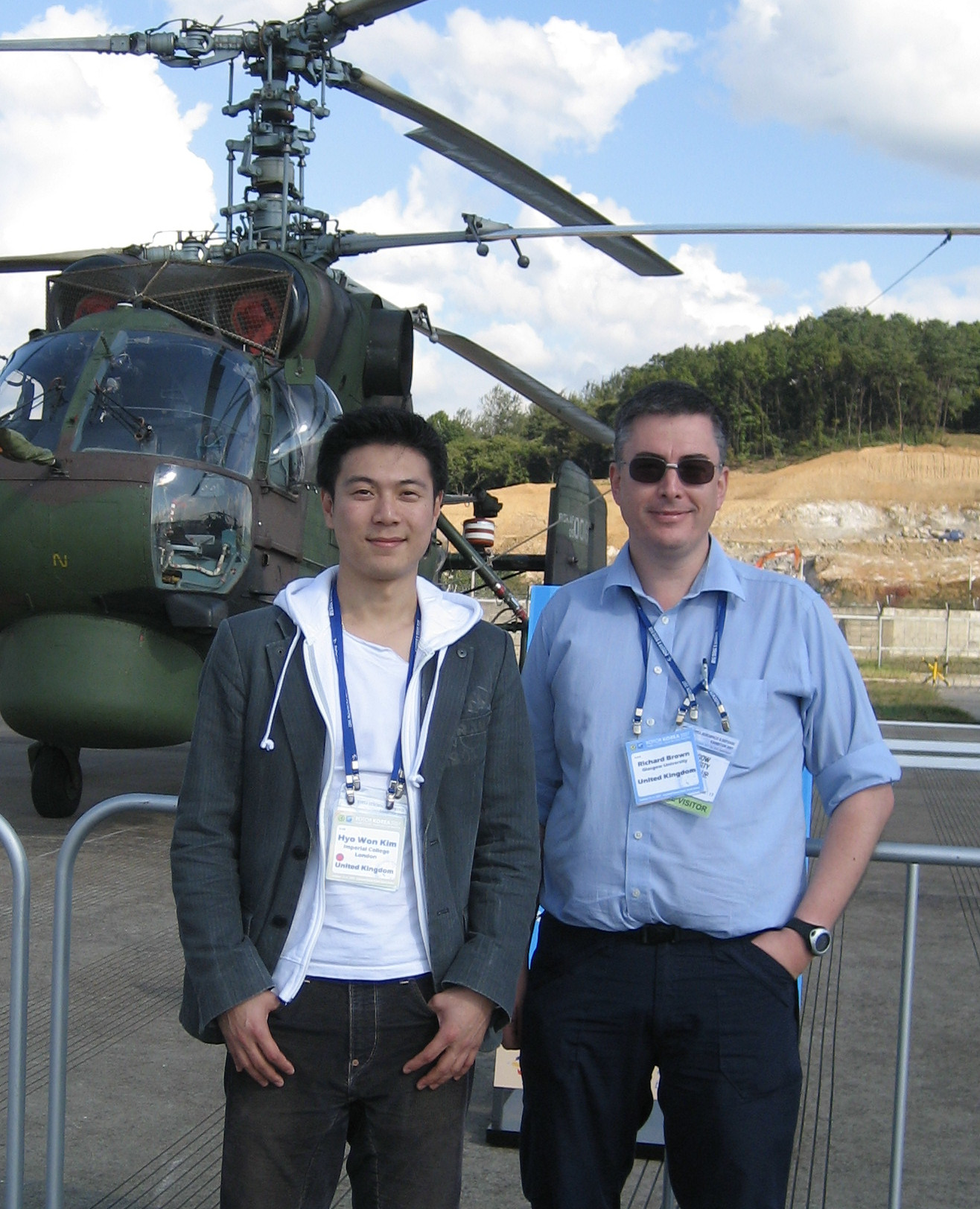
Hyo Won Kim
PhD student, Imperial College London, 2004–2008,
Research Assistant, University of Glasgow, 2008-2010
Research Assistant, University of Glasgow, 2008-2010
Presently Aerodynamic Projects Leader at Williams Formula 1
Hyo Won joined the rotorcraft group at Imperial College at the same time as Tim and Adam, having just completed his MEng in Aerospace Engineering at Cambridge University. The original motivation for Hyo Won's PhD work was to add to our knowledge of aerodynamic interactions within the helicopter system by examining the details of the aerodynamic interference between two closely-coupled rotors, in so-called coaxial configuration, in isolation from the remainder of the helicopter system.
Title of Dissertation: A Computational Study of Helicopter Coaxial Rotor Aerodynamics and Performance
A persistent confusion exists within the helicopter community as to whether the coaxial rotor is "better" than a more conventional rotor configuration in the sense of consuming less power when the flight conditions, for instance as defined in terms of forward speed and rotor thrust, are equivalent.
Hyo Won's early work showed conclusively that the argument was a red herring - the answer is heavily dependent on how the system is actually defined. For example, if one designs a rotor with a 'stiff' hub rather than a conventional articulated hub then a range of possibilities is introduced, for instance by exploiting the non-uniqueness of the trim strategy when the pitching and rolling moments generated by the rotors do not have to be cancelled individually but only as part of the system as a whole, to optimise the loading on the rotors, and hence their power consumption, in various ways. Using an auxiliary propulsor to delegate the roles of thrust and lift generation to separate rotors could also yield large performance benefits if properly exploited.
Hyo Won's work turned out to be particularly timely. A sudden resurgence in interest in the compound coaxial configuration followed the news that Sikorsky's X2 demonstrator, which was designed to have a rear-mounted propulsor in addition to its stiff coaxial main rotor, was just about to start flight testing.
After completing his PhD, Hyo Won took up a position as a Research Assistant within the group. In conjunction with Glen Whitehouse, by then an Associate at Continuum Dynamics Inc. in Ewing, New Jersey, he was able to use his background in the modelling of very similar systems to assist Sikorsky in understanding the likely consequences, once their aircraft reached flight test, of any potential aerodynamic interaction between the wake of the main rotors and the tailplane of the X2. He was also able to provide a detailed estimate of the noise likely to be radiated by the aircraft in those particular flight conditions where the individual vortices in the wake from the main rotor would pass very close to the blades of the rear-mounted propulsor. In doing so he established our modelling technology in the eyes of industry as not just as an academic research tool but also as an approach that could yield powerful insights into the likely real-world properties of real vehicles.
The broader contribution of Hyo Won's work to the rotorcraft community was to underline yet again the breadth and complexity of the aerodynamic issues that might be faced in the design of a modern rotorcraft. His work has become highly relevant again of late in exposing the breadth of aerodynamic issues that may need to be contended with in the design of modern air taxi and advanced rotorcraft configurations, where multiple rotors together with wings and other lifting surfaces are routinely being considered in various juxtapositions in an effort to compromise between performance in hover and in forward flight.
Hyo Won's work was highly regarded both for its industrial relevance and for its academic quality, as evinced by the two prestigious prizes that his work was awarded : the Korean Aerospace Industry Best Paper award for his work “Impact of Trim Strategy and Rotor Stiffness on Coaxial Rotor Performance,” presented at the 1st AHS/KSASS International Forum on Rotorcraft Multidisciplinary Technology in Seoul, Korea, in October 2008, and the Best Paper of Conference award to his work “Interactional Aerodynamics and Acoustics of a Hingeless Coaxial Helicopter with an Auxiliary Propeller in Forward Flight,” jointly written with Adam Kenyon and presented at the Royal Aeronautical Society's 9th International Powered Lift Conference in London in July 2008.
Hyo Won joined the rotorcraft group at Imperial College at the same time as Tim and Adam, having just completed his MEng in Aerospace Engineering at Cambridge University. The original motivation for Hyo Won's PhD work was to add to our knowledge of aerodynamic interactions within the helicopter system by examining the details of the aerodynamic interference between two closely-coupled rotors, in so-called coaxial configuration, in isolation from the remainder of the helicopter system.
Title of Dissertation: A Computational Study of Helicopter Coaxial Rotor Aerodynamics and Performance
A persistent confusion exists within the helicopter community as to whether the coaxial rotor is "better" than a more conventional rotor configuration in the sense of consuming less power when the flight conditions, for instance as defined in terms of forward speed and rotor thrust, are equivalent.
Hyo Won's early work showed conclusively that the argument was a red herring - the answer is heavily dependent on how the system is actually defined. For example, if one designs a rotor with a 'stiff' hub rather than a conventional articulated hub then a range of possibilities is introduced, for instance by exploiting the non-uniqueness of the trim strategy when the pitching and rolling moments generated by the rotors do not have to be cancelled individually but only as part of the system as a whole, to optimise the loading on the rotors, and hence their power consumption, in various ways. Using an auxiliary propulsor to delegate the roles of thrust and lift generation to separate rotors could also yield large performance benefits if properly exploited.
Hyo Won's work turned out to be particularly timely. A sudden resurgence in interest in the compound coaxial configuration followed the news that Sikorsky's X2 demonstrator, which was designed to have a rear-mounted propulsor in addition to its stiff coaxial main rotor, was just about to start flight testing.
After completing his PhD, Hyo Won took up a position as a Research Assistant within the group. In conjunction with Glen Whitehouse, by then an Associate at Continuum Dynamics Inc. in Ewing, New Jersey, he was able to use his background in the modelling of very similar systems to assist Sikorsky in understanding the likely consequences, once their aircraft reached flight test, of any potential aerodynamic interaction between the wake of the main rotors and the tailplane of the X2. He was also able to provide a detailed estimate of the noise likely to be radiated by the aircraft in those particular flight conditions where the individual vortices in the wake from the main rotor would pass very close to the blades of the rear-mounted propulsor. In doing so he established our modelling technology in the eyes of industry as not just as an academic research tool but also as an approach that could yield powerful insights into the likely real-world properties of real vehicles.
The broader contribution of Hyo Won's work to the rotorcraft community was to underline yet again the breadth and complexity of the aerodynamic issues that might be faced in the design of a modern rotorcraft. His work has become highly relevant again of late in exposing the breadth of aerodynamic issues that may need to be contended with in the design of modern air taxi and advanced rotorcraft configurations, where multiple rotors together with wings and other lifting surfaces are routinely being considered in various juxtapositions in an effort to compromise between performance in hover and in forward flight.
Hyo Won's work was highly regarded both for its industrial relevance and for its academic quality, as evinced by the two prestigious prizes that his work was awarded : the Korean Aerospace Industry Best Paper award for his work “Impact of Trim Strategy and Rotor Stiffness on Coaxial Rotor Performance,” presented at the 1st AHS/KSASS International Forum on Rotorcraft Multidisciplinary Technology in Seoul, Korea, in October 2008, and the Best Paper of Conference award to his work “Interactional Aerodynamics and Acoustics of a Hingeless Coaxial Helicopter with an Auxiliary Propeller in Forward Flight,” jointly written with Adam Kenyon and presented at the Royal Aeronautical Society's 9th International Powered Lift Conference in London in July 2008.
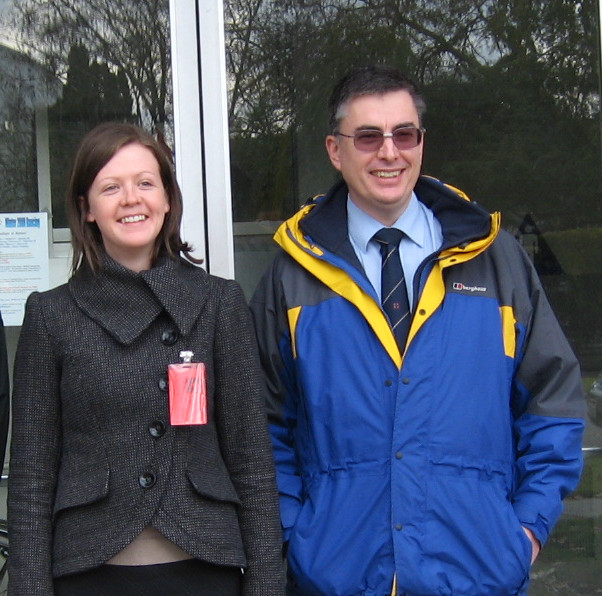
Mary Dowey (Kelly)
PhD student, Glasgow University, 2006–2009
Presently Senior Technical Manager at Resonate testing Ltd
2006 marked another big move, with the rotorcraft group transplanting itself from Imperial College, located in the bustling tourist centre of South Kensington, to the University of Glasgow. For me it was a return to the leafy environs of Glasgow's cosmopolitan West End - this time as the Mechan Chair of Aerodynamics and director of the newly re-constituted Glasgow Rotorcraft Research Laboratory.
Having just completed her MEng at The Queen's University in Belfast, Northern Ireland, Mary was the first new student to join the now quite sizeable group of students working on rotorcraft-related problems that had moved with me from London to Glasgow University.
Title of Dissertation: Predicting the High-Frequency Airloads and Acoustics associated with Blade-Vortex Interaction
Another real problem in helicopter design is the high-frequency noise and vibration that is produced especially during descending flight. The origin of this noise and vibration in descending flight is that the individual vortices in the rotor wake end up passing very close to the plane of the rotor, where they produce highly-localised and strong perturbations to the loading on the blades. These loading perturbations are very difficult to model accurately because of their extreme sensitivity to both the strength of the vortices and to the miss-distance between the vortices and the blades. This mutual dependency in turn requires very accurate modelling of both the aerodynamics of the rotor wake and the structural deflections of the rotor blades themselves in order to capture the physics of these blade-vortex interactions (or BVIs) with any degree of accuracy.
Most computational methods diffuse and dissipate the structure of the vortices very rapidly after their creation, and hence do not predict the strength or position of the wake vortices to the accuracy required to resolve the blade-vortex interactions that lie at the root of the high-frequency noise and vibration of the rotor in descending flight. Several simple models for rotor acoustics exist, but most treat the higher-frequency loads and associated noise that results from BVIs with a significant degree of empiricism.
Mary's aim was to determine whether these loads, and the associated noise, could be predicted from first principles, thus showing the way towards supplanting much of the empiricism in other approaches that were then current. An invitation for us to participate in the DLR-US Army HART-II series of workshops held from 2005 through to 2009 allowed us to compare our methodology against some extremely high-quality experimental data that had been obtained in the German-Dutch Windtunnel Facility (DNW) and to assess the ability of the VTM to capture both the high-frequency airloads as well as the noise associated with the BVIs on the HART-II rotor.
Mary was able to implement a major upgrade to the blade aerodynamic model within the VTM to allow it to resolve the blade aerodynamics over the very short durations of the individual BVIs, and these modifications were instrumental in allowing the wake structure of the HART-II rotor to be very accurately predicted. Very encouraging comparisons of the rotor's predicted acoustic signature with experimental data followed in what was perhaps one of the most challenging applications of the VTM to date.
Mary's work laid down a significant milestone in our application of the VTM to problems of practical interest. The key feature of the VTM was the unparalleled capacity that its unique numerical formulation had given it to accurately model the evolution of the vortical structures in the rotor wake without the numerical dissipation of those structures that was characteristic of almost all other numerical approaches. In a case such as HART-II, the vortices need to be so highly resolved that real physical dissipation of vorticity as a result of fluid viscosity (rather than the spurious numerical effects) needs to be properly accounted for.
In a way, thus, Mary's work brought us full circle to the days of my Master's thesis twenty years earlier where I had considered exactly this problem in the context of the compressible Navier-Stokes equations. Through Mary's work we understood much better the boundaries of applicability of the basic formalism within the VTM, and indeed could see the way through to producing the revised, second generation version of the code that now forms part of Sophrodyne's armamentarium of techniques and tools.
2006 marked another big move, with the rotorcraft group transplanting itself from Imperial College, located in the bustling tourist centre of South Kensington, to the University of Glasgow. For me it was a return to the leafy environs of Glasgow's cosmopolitan West End - this time as the Mechan Chair of Aerodynamics and director of the newly re-constituted Glasgow Rotorcraft Research Laboratory.
Having just completed her MEng at The Queen's University in Belfast, Northern Ireland, Mary was the first new student to join the now quite sizeable group of students working on rotorcraft-related problems that had moved with me from London to Glasgow University.
Title of Dissertation: Predicting the High-Frequency Airloads and Acoustics associated with Blade-Vortex Interaction
Another real problem in helicopter design is the high-frequency noise and vibration that is produced especially during descending flight. The origin of this noise and vibration in descending flight is that the individual vortices in the rotor wake end up passing very close to the plane of the rotor, where they produce highly-localised and strong perturbations to the loading on the blades. These loading perturbations are very difficult to model accurately because of their extreme sensitivity to both the strength of the vortices and to the miss-distance between the vortices and the blades. This mutual dependency in turn requires very accurate modelling of both the aerodynamics of the rotor wake and the structural deflections of the rotor blades themselves in order to capture the physics of these blade-vortex interactions (or BVIs) with any degree of accuracy.
Most computational methods diffuse and dissipate the structure of the vortices very rapidly after their creation, and hence do not predict the strength or position of the wake vortices to the accuracy required to resolve the blade-vortex interactions that lie at the root of the high-frequency noise and vibration of the rotor in descending flight. Several simple models for rotor acoustics exist, but most treat the higher-frequency loads and associated noise that results from BVIs with a significant degree of empiricism.
Mary's aim was to determine whether these loads, and the associated noise, could be predicted from first principles, thus showing the way towards supplanting much of the empiricism in other approaches that were then current. An invitation for us to participate in the DLR-US Army HART-II series of workshops held from 2005 through to 2009 allowed us to compare our methodology against some extremely high-quality experimental data that had been obtained in the German-Dutch Windtunnel Facility (DNW) and to assess the ability of the VTM to capture both the high-frequency airloads as well as the noise associated with the BVIs on the HART-II rotor.
Mary was able to implement a major upgrade to the blade aerodynamic model within the VTM to allow it to resolve the blade aerodynamics over the very short durations of the individual BVIs, and these modifications were instrumental in allowing the wake structure of the HART-II rotor to be very accurately predicted. Very encouraging comparisons of the rotor's predicted acoustic signature with experimental data followed in what was perhaps one of the most challenging applications of the VTM to date.
Mary's work laid down a significant milestone in our application of the VTM to problems of practical interest. The key feature of the VTM was the unparalleled capacity that its unique numerical formulation had given it to accurately model the evolution of the vortical structures in the rotor wake without the numerical dissipation of those structures that was characteristic of almost all other numerical approaches. In a case such as HART-II, the vortices need to be so highly resolved that real physical dissipation of vorticity as a result of fluid viscosity (rather than the spurious numerical effects) needs to be properly accounted for.
In a way, thus, Mary's work brought us full circle to the days of my Master's thesis twenty years earlier where I had considered exactly this problem in the context of the compressible Navier-Stokes equations. Through Mary's work we understood much better the boundaries of applicability of the basic formalism within the VTM, and indeed could see the way through to producing the revised, second generation version of the code that now forms part of Sophrodyne's armamentarium of techniques and tools.
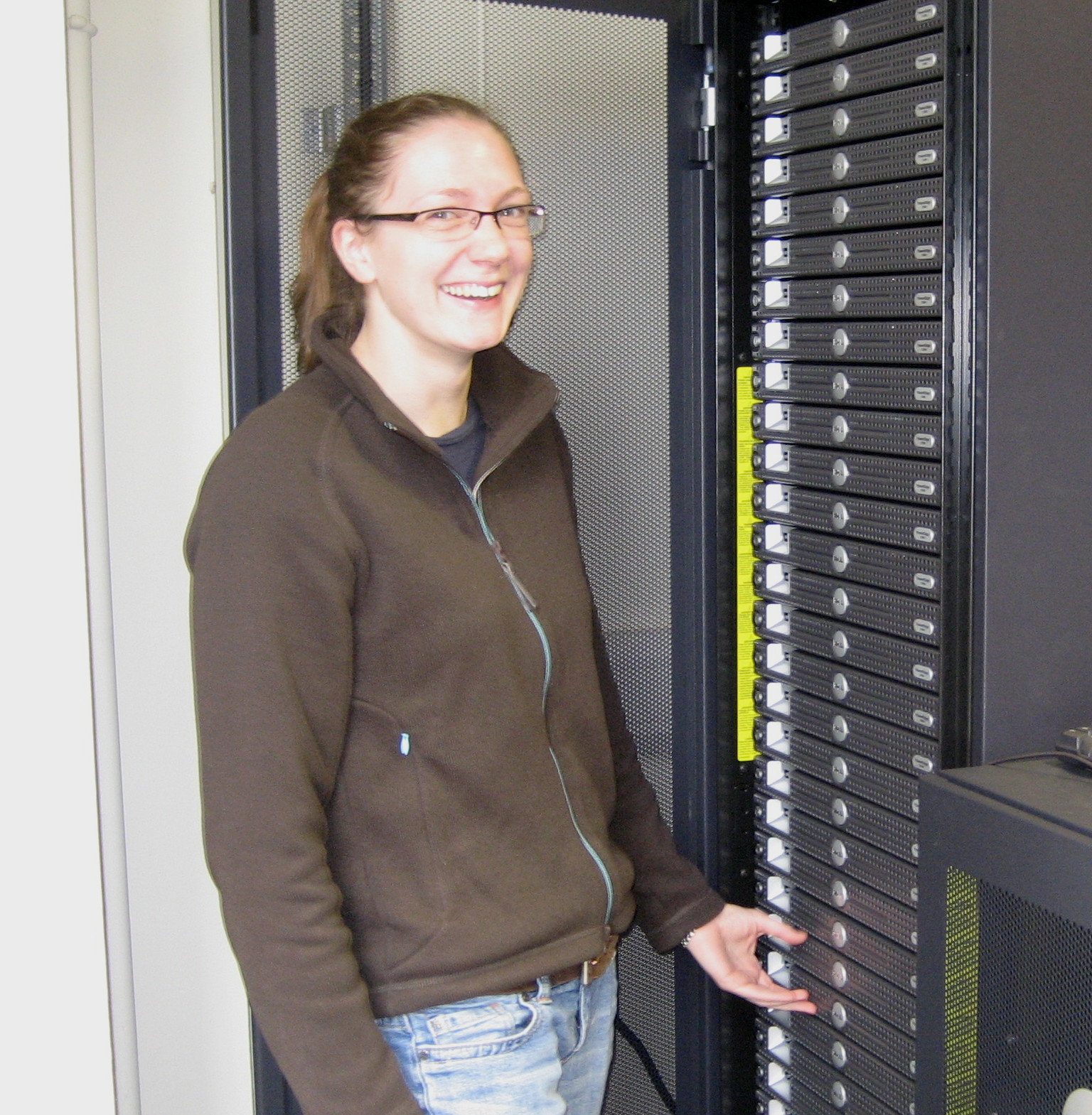
Catriona Phillips
PhD student, Glasgow University, 2006–2009
Presently Installation Engineer at Andritz Hydro
Catriona joined the rotorcraft group at Glasgow University following completion of her MEng in the Department of Mechanical Engineering at the University of Glasgow.
Title of Dissertation: A Computational Study of Rotorcraft Aerodynamics in Ground Effect and Brownout
Just as Catriona was beginning her PhD, the military was ramping up their activities in the Middle East as part of the Second Gulf Conflict. Helicopter operators in the desert conditions common to that part of the world were experiencing considerable problems with the uplift of sand by the downwash from the rotors as their helicopters came in to land. The sand would obscure the pilot's vison of the ground and nearby obstacles at precisely the moment of touchdown in a dangerous phenomenon known as "brownout".
Attempts to model the evolution of the rotor-induced cloud of sand that is produced under brownout conditions had up to then relied on representing the composition of the cloud by modelling the the dynamics of a small but supposedly representative set of individual 'test particles'. Catriona re-analysed the basic equations of motion of the sand particles, using an approach based on the statistical mechanics of a large number of indistinguishable elements, and showed, by using a very clever argument based on the separation of timescales, that a set of continuum equations for the dynamics of the sand could be derived which would be much more efficient computationally than the traditional particle-based approach.
She then used these equations to good effect in elucidating the interactions between the rotor wake and the ground that are responsible for generating most of the dust cloud. She then went on to expose some of the links between rotorcraft design and the resultant behaviour of the dust cloud in brownout conditions. A major practical advantage was that her model could track the dynamics of the brownout cloud as it evolved, thus allowing operators to explore the link between the trajectory flown by the aircraft and the resultant size and shape of the brownout cloud as the vehicle approached its landing spot.
Apart from its significant contribution to helicopter safety, Catriona's work showed also how a proper understanding of the relevant physics, combined with judicious modelling, could be used to gain efficient and instructive insights into a problem of immediate and practical operational concern. To a certain extent this countered perceptions that a model as sophisticated as the VTM would have limited utility in being able to solve real practical problems within timescales that would be acceptable to the operational community. It also showed yet again that an analysis founded on a sensible degree of mathematical abstraction can often yield clearer insights into the behaviour of the physical world than an approach that is founded purely on general-purpose tools and computational power alone.
There are very few students that have won one, let alone two, best paper awards at the American Helicopter Society's Annual National Forum. Catriona achieved this feat by receiving her first best paper award for her work titled "Eulerian Simulation of the Fluid Dynamics of Helicopter Brownout," presented at the 64th Annual Forum in Montreal in 2008, and a second award two years later for her paper titled "The Flow Physics of Helicopter Brownout," presented at the 66th Annual Forum in Phoenix, Arizona.
Catriona joined the rotorcraft group at Glasgow University following completion of her MEng in the Department of Mechanical Engineering at the University of Glasgow.
Title of Dissertation: A Computational Study of Rotorcraft Aerodynamics in Ground Effect and Brownout
Just as Catriona was beginning her PhD, the military was ramping up their activities in the Middle East as part of the Second Gulf Conflict. Helicopter operators in the desert conditions common to that part of the world were experiencing considerable problems with the uplift of sand by the downwash from the rotors as their helicopters came in to land. The sand would obscure the pilot's vison of the ground and nearby obstacles at precisely the moment of touchdown in a dangerous phenomenon known as "brownout".
Attempts to model the evolution of the rotor-induced cloud of sand that is produced under brownout conditions had up to then relied on representing the composition of the cloud by modelling the the dynamics of a small but supposedly representative set of individual 'test particles'. Catriona re-analysed the basic equations of motion of the sand particles, using an approach based on the statistical mechanics of a large number of indistinguishable elements, and showed, by using a very clever argument based on the separation of timescales, that a set of continuum equations for the dynamics of the sand could be derived which would be much more efficient computationally than the traditional particle-based approach.
She then used these equations to good effect in elucidating the interactions between the rotor wake and the ground that are responsible for generating most of the dust cloud. She then went on to expose some of the links between rotorcraft design and the resultant behaviour of the dust cloud in brownout conditions. A major practical advantage was that her model could track the dynamics of the brownout cloud as it evolved, thus allowing operators to explore the link between the trajectory flown by the aircraft and the resultant size and shape of the brownout cloud as the vehicle approached its landing spot.
Apart from its significant contribution to helicopter safety, Catriona's work showed also how a proper understanding of the relevant physics, combined with judicious modelling, could be used to gain efficient and instructive insights into a problem of immediate and practical operational concern. To a certain extent this countered perceptions that a model as sophisticated as the VTM would have limited utility in being able to solve real practical problems within timescales that would be acceptable to the operational community. It also showed yet again that an analysis founded on a sensible degree of mathematical abstraction can often yield clearer insights into the behaviour of the physical world than an approach that is founded purely on general-purpose tools and computational power alone.
There are very few students that have won one, let alone two, best paper awards at the American Helicopter Society's Annual National Forum. Catriona achieved this feat by receiving her first best paper award for her work titled "Eulerian Simulation of the Fluid Dynamics of Helicopter Brownout," presented at the 64th Annual Forum in Montreal in 2008, and a second award two years later for her paper titled "The Flow Physics of Helicopter Brownout," presented at the 66th Annual Forum in Phoenix, Arizona.
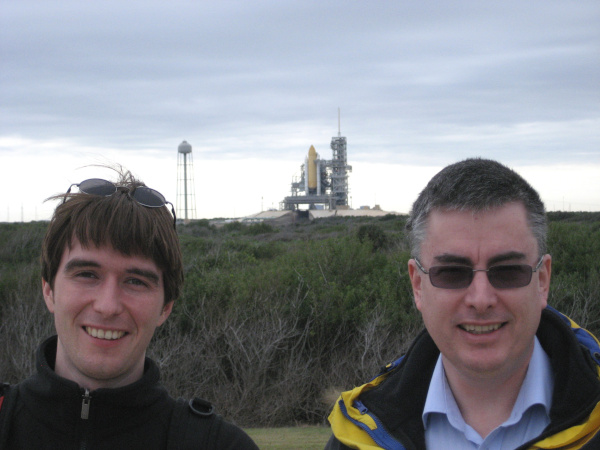
Frank Scheurich
PhD student, Glasgow University, 2008–2011
Presently Wind Energy Engineer at Siemens Gamesa
By that stage Tim Fletcher had completed his PhD and taken up a position as a Research Assistant in the Group. Given his very strong interest in renewable energy, I decided to let him explore how well our modelling techniques would extend to wind turbines. Taking our research in this direction seemed particularly apposite given growing interest worldwide at the time (and particularly in Scotland with its prodigious wind resource) in developing new ways of extracting energy directly from the atmosphere.
Frank joined us having just completed a MSc degree in Aerospace Dynamics at Cranfield University, and he and Tim set to work in earnest, expanding our modelling capability into the renewable energy domain. Tim's major focus was on the physics of horizontal-axis designs whereas Frank was to focus on the particular problems associated with vertical-axis machines.
Title of Dissertation: Modelling the Aerodynamics of Vertical-Axis Wind Turbines
A Vertical-axis wind turbine produces a wake with a particularly complex internal vortical structure. As each blade rotates around its azimuth it interacts with the vortices that were produced during previous revolutions by the blade itself, as well as with the vortices similarly produced by the other blades of the turbine. At the time, most models for the performance of vertical-axis wind turbines did not account fully for these interactions, and thus tended to overestimate the power produced by the turbine while underestimating the vibrational loads and noise.
Frank worked in close collaboration with Mary to extend the VTM to account for the highly non-linear aerodynamics of rapidly-pitching blades, and was able to relate the power output of the turbine to the distribution of aerodynamic loads on the blades of the device by producing very detailed maps of the effects of wake interaction on the time-dependent loading along the span of the blades. He was able to establish a clear link between the power output, loads and vibration produced by the turbine, the geometry of its blades and the angularity of the onset flow with respect to the axis of the turbine for a range of practical operating conditions and turbine designs.
His work attracted the attention of Tamás Bertényi, then CEO of a company called Quiet Revolution, which was producing turbines with an innovative, helical blade design that was claimed to reduce significantly the noise and vibration of the device. In exchange for them providing valuable validation data for our model, we were able to identify the physical origins of the favourable vibrational characteristics of their design in the way that the peak in the aerodynamic loading moved along the blade as the turbine rotated about its axis. Frank also achieved an important practical result, with bearing on the large-scale deployment of these devices, by showing that vertical-axis turbines arranged in a carefully-structured array could be made to produce more power than the sum of the power produced by the turbines in isolation. Indeed, the potential of mutual interference within a vertical-axis turbine array to enhance its power output is an effect that is only now being exploited in practice.
Frank's set of papers on various aspects of vertical-axis wind terbine design and operation remain the most often-cited set of publications produced by my rotorcraft research team during its decade or so of existence. The quality of his work was acknowledged when Frank and Tim were awarded the Edwin Walker Prize for the best paper on a power industries mechanical engineering subject by the Institution of Mechanical Engineers for their paper titled "Effect of blade geometry on the aerodynamic loads produced by vertical-axis wind turbines" in May 2011.
By that stage Tim Fletcher had completed his PhD and taken up a position as a Research Assistant in the Group. Given his very strong interest in renewable energy, I decided to let him explore how well our modelling techniques would extend to wind turbines. Taking our research in this direction seemed particularly apposite given growing interest worldwide at the time (and particularly in Scotland with its prodigious wind resource) in developing new ways of extracting energy directly from the atmosphere.
Frank joined us having just completed a MSc degree in Aerospace Dynamics at Cranfield University, and he and Tim set to work in earnest, expanding our modelling capability into the renewable energy domain. Tim's major focus was on the physics of horizontal-axis designs whereas Frank was to focus on the particular problems associated with vertical-axis machines.
Title of Dissertation: Modelling the Aerodynamics of Vertical-Axis Wind Turbines
A Vertical-axis wind turbine produces a wake with a particularly complex internal vortical structure. As each blade rotates around its azimuth it interacts with the vortices that were produced during previous revolutions by the blade itself, as well as with the vortices similarly produced by the other blades of the turbine. At the time, most models for the performance of vertical-axis wind turbines did not account fully for these interactions, and thus tended to overestimate the power produced by the turbine while underestimating the vibrational loads and noise.
Frank worked in close collaboration with Mary to extend the VTM to account for the highly non-linear aerodynamics of rapidly-pitching blades, and was able to relate the power output of the turbine to the distribution of aerodynamic loads on the blades of the device by producing very detailed maps of the effects of wake interaction on the time-dependent loading along the span of the blades. He was able to establish a clear link between the power output, loads and vibration produced by the turbine, the geometry of its blades and the angularity of the onset flow with respect to the axis of the turbine for a range of practical operating conditions and turbine designs.
His work attracted the attention of Tamás Bertényi, then CEO of a company called Quiet Revolution, which was producing turbines with an innovative, helical blade design that was claimed to reduce significantly the noise and vibration of the device. In exchange for them providing valuable validation data for our model, we were able to identify the physical origins of the favourable vibrational characteristics of their design in the way that the peak in the aerodynamic loading moved along the blade as the turbine rotated about its axis. Frank also achieved an important practical result, with bearing on the large-scale deployment of these devices, by showing that vertical-axis turbines arranged in a carefully-structured array could be made to produce more power than the sum of the power produced by the turbines in isolation. Indeed, the potential of mutual interference within a vertical-axis turbine array to enhance its power output is an effect that is only now being exploited in practice.
Frank's set of papers on various aspects of vertical-axis wind terbine design and operation remain the most often-cited set of publications produced by my rotorcraft research team during its decade or so of existence. The quality of his work was acknowledged when Frank and Tim were awarded the Edwin Walker Prize for the best paper on a power industries mechanical engineering subject by the Institution of Mechanical Engineers for their paper titled "Effect of blade geometry on the aerodynamic loads produced by vertical-axis wind turbines" in May 2011.
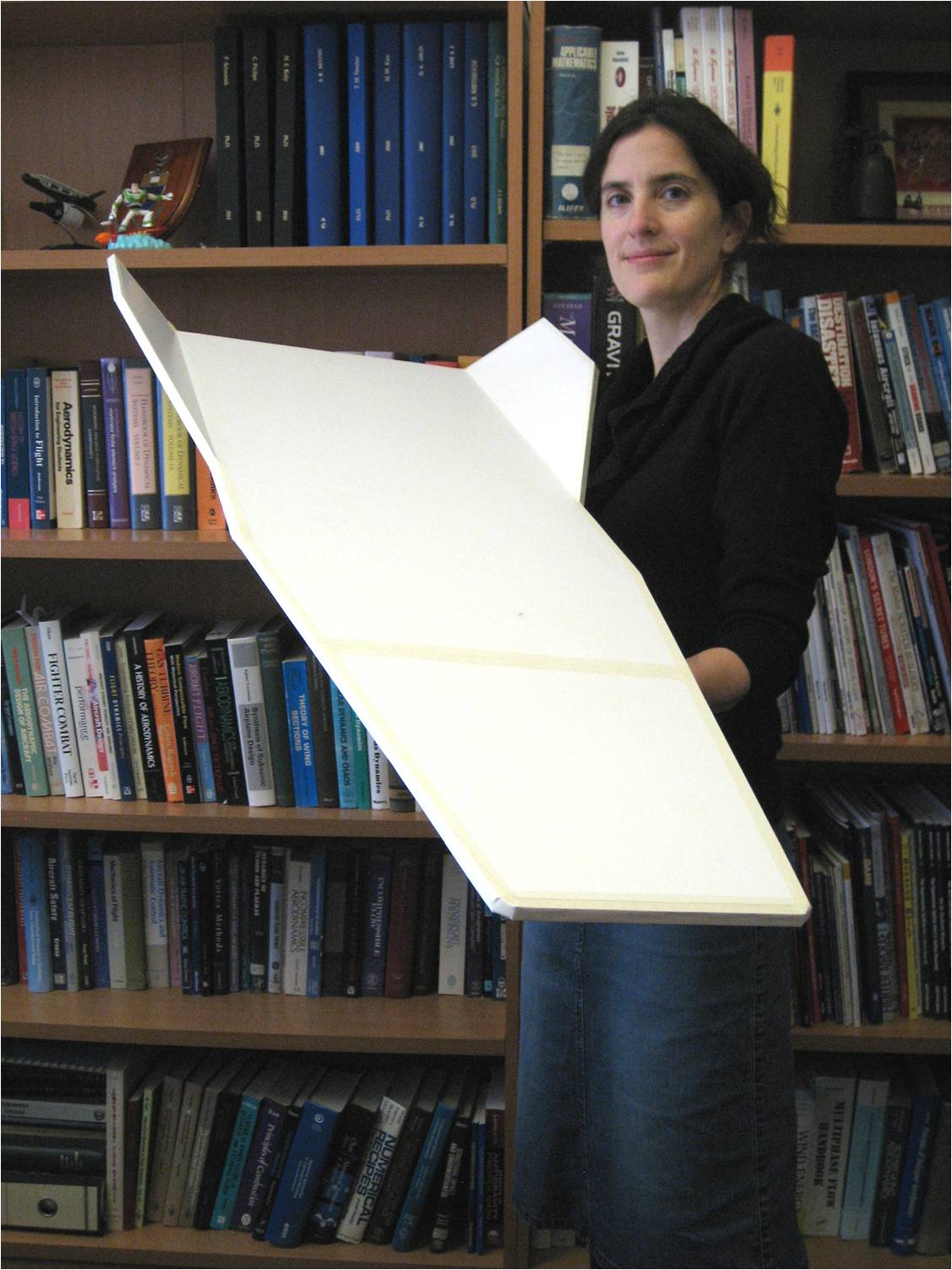
Christie Maddock
Research Fellow, Strathclyde University, 2011–2013
Presently Associate Professor in Aerospace Transportation Systems, University of Strathclyde
2010 brought another change of emphasis for me as I moved across town to the University of Strathclyde as the founder and director of the new Centre for Future Air Space Transportation Technology.
The aim of the Centre was to contribute to the technological base required to bring to fruition a range of very futuristic aerospace concepts, including airliners that would be capable of antipodeal range in roughly two hours, and vehicles that would be capable of taking off from a runway and ascending to orbit rather than launching vertically like conventional rockets. At the time, large strides were being made in both the UK (in particular at a company called Reaction Engines) and elsewhere in the world (most obviously in the USA and Australia, but also throughout the European Union and in Russia and China) in developing such technology. The Centre was set up to concentrate on the three key areas of propulsion, flight dynamics and aerodynamics that would form the foundation of the technology for such vehicles.
Christie had established her reputation as an extremely competent and professional researcher while working towards her PhD in Space Mission Design at the University of Glasgow, and I was delighted to have her join the Centre to manage its flight dynamics-related activities.
Christie's technical work involved developing a trajectory modelling capability that could be used to analyse in detail the particular problems associated with the guidance, navigation and control of single-stage to orbit vehicles and hypersonic long-range airliners. An important part of her work was to include the effects of uncertainties in the condition of the atmosphere through which the vehicle would fly, these having a major impact on mission reliability as well as predictions of other important operational parameters such as the spread of fatigue life across the range of vehicles in an operational fleet.
In a very fruitful interaction with Reaction Engines, Christie was able to map out the effects of temperature and density fluctuations in the atmosphere, as well as the influence of high-altitude winds and turbulence, in creating a spread of trajectories - for which the flight planning system of any SSTO or future airliner would then have to compensate. Subsequent enhancements to her approach gave us the ability to assess the effects of similar atmospheric uncertainties on the vehicle's ability to fly a successful abort trajectory following a serious system failure.
Accurate modelling of vehicle performance in these "edge case" scenarios is considered vital from the practical standpoint, since the associated trajectories are designed to return the vehicle to the ground (or to a safe orbit) as quickly and directly as possible. This has the consequence that the vehicle is subject to higher than usual aerodynamic and dynamic loads and there is less time to compensate for any divergences from nominal conditions. Christie's analysis was able to set bounds on the expected survival of the vehicle over a range of realistic abort scenarios and considerably influenced thinking within the Skylon design team.
2010 brought another change of emphasis for me as I moved across town to the University of Strathclyde as the founder and director of the new Centre for Future Air Space Transportation Technology.
The aim of the Centre was to contribute to the technological base required to bring to fruition a range of very futuristic aerospace concepts, including airliners that would be capable of antipodeal range in roughly two hours, and vehicles that would be capable of taking off from a runway and ascending to orbit rather than launching vertically like conventional rockets. At the time, large strides were being made in both the UK (in particular at a company called Reaction Engines) and elsewhere in the world (most obviously in the USA and Australia, but also throughout the European Union and in Russia and China) in developing such technology. The Centre was set up to concentrate on the three key areas of propulsion, flight dynamics and aerodynamics that would form the foundation of the technology for such vehicles.
Christie had established her reputation as an extremely competent and professional researcher while working towards her PhD in Space Mission Design at the University of Glasgow, and I was delighted to have her join the Centre to manage its flight dynamics-related activities.
Christie's technical work involved developing a trajectory modelling capability that could be used to analyse in detail the particular problems associated with the guidance, navigation and control of single-stage to orbit vehicles and hypersonic long-range airliners. An important part of her work was to include the effects of uncertainties in the condition of the atmosphere through which the vehicle would fly, these having a major impact on mission reliability as well as predictions of other important operational parameters such as the spread of fatigue life across the range of vehicles in an operational fleet.
In a very fruitful interaction with Reaction Engines, Christie was able to map out the effects of temperature and density fluctuations in the atmosphere, as well as the influence of high-altitude winds and turbulence, in creating a spread of trajectories - for which the flight planning system of any SSTO or future airliner would then have to compensate. Subsequent enhancements to her approach gave us the ability to assess the effects of similar atmospheric uncertainties on the vehicle's ability to fly a successful abort trajectory following a serious system failure.
Accurate modelling of vehicle performance in these "edge case" scenarios is considered vital from the practical standpoint, since the associated trajectories are designed to return the vehicle to the ground (or to a safe orbit) as quickly and directly as possible. This has the consequence that the vehicle is subject to higher than usual aerodynamic and dynamic loads and there is less time to compensate for any divergences from nominal conditions. Christie's analysis was able to set bounds on the expected survival of the vehicle over a range of realistic abort scenarios and considerably influenced thinking within the Skylon design team.
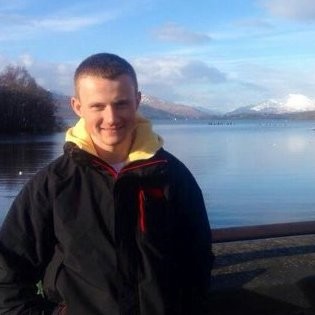
Craig White
Research Assistant, Strathclyde University, 2013-2014
Presently Senior Lecturer in Aerospace Sciences, University of Glasgow
Craig completed his PhD in Jason Reese's group at Strathclyde University and had established a reputation as an extremely competent and knowledgeable researcher in the difficult area of high-speed and rarefied gas dynamics. With this background, he was the ideal candidate to manage the range of activities in the Centre that were oriented towards characterising and understanding the aerodynamics of aircraft and spacecraft at the very high altitudes and speeds that were envisaged for these new means of transport.
Craig's specific technical contribution was to help us construct a suite of high-performance computational codes based on Boyd's Direct-Simulation Monte Carlo (DSMC) method that could be used to analyse in detail the aerodynamics of aircraft and spacecraft operating at the extreme speeds and altitudes in which we were interested. The advantage of the DSMC method is its foundation on Boltzmann's gas dynamics equations. These represent the behaviour of the particles of the gas at a very fundamental physical level by computing the statistical distributions of the molecular properties over all possible velocities and positions that the individual particles can adopt.
This approach is ideal, and provides an unparalleled level of insight, when molecular-level properties of the gas, such as internal vibrational state, the orientation of the molecules during collisions with each other and the vehicle surface, chemistry between different molecular species, dissociation, the ionisation state of individual atoms, and so on, are important contributors to the distribution of pressure, velocity and heating on the surface of the vehicle - as was often the case with the types of vehicles that we were attempting to analyse and design.
Craig completed his PhD in Jason Reese's group at Strathclyde University and had established a reputation as an extremely competent and knowledgeable researcher in the difficult area of high-speed and rarefied gas dynamics. With this background, he was the ideal candidate to manage the range of activities in the Centre that were oriented towards characterising and understanding the aerodynamics of aircraft and spacecraft at the very high altitudes and speeds that were envisaged for these new means of transport.
Craig's specific technical contribution was to help us construct a suite of high-performance computational codes based on Boyd's Direct-Simulation Monte Carlo (DSMC) method that could be used to analyse in detail the aerodynamics of aircraft and spacecraft operating at the extreme speeds and altitudes in which we were interested. The advantage of the DSMC method is its foundation on Boltzmann's gas dynamics equations. These represent the behaviour of the particles of the gas at a very fundamental physical level by computing the statistical distributions of the molecular properties over all possible velocities and positions that the individual particles can adopt.
This approach is ideal, and provides an unparalleled level of insight, when molecular-level properties of the gas, such as internal vibrational state, the orientation of the molecules during collisions with each other and the vehicle surface, chemistry between different molecular species, dissociation, the ionisation state of individual atoms, and so on, are important contributors to the distribution of pressure, velocity and heating on the surface of the vehicle - as was often the case with the types of vehicles that we were attempting to analyse and design.
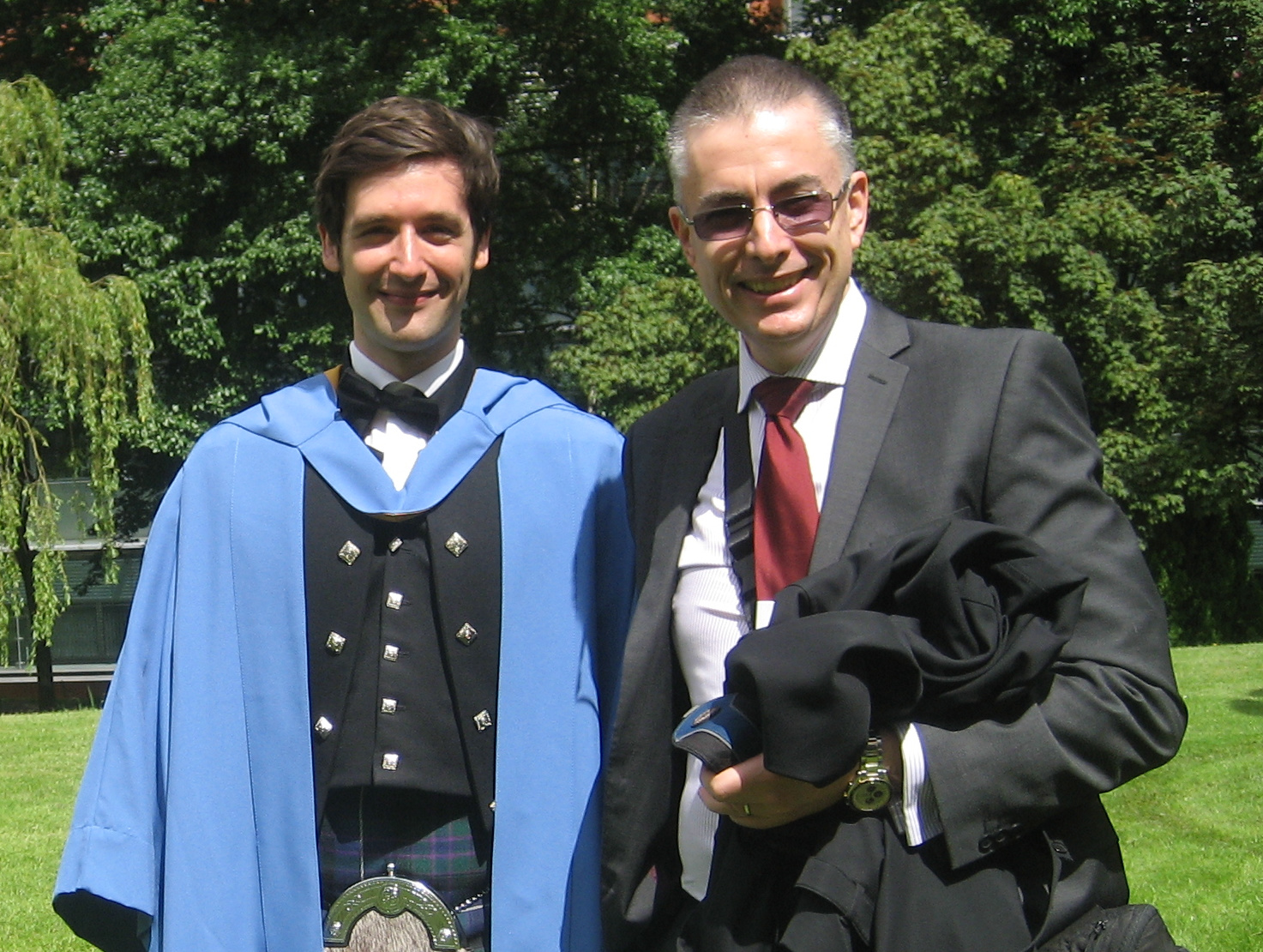
Romain Wuilbercq
PhD student, Strathclyde University, 2011-2015,
Research Assistant, Strathclyde University, 2015-2016
Research Assistant, Strathclyde University, 2015-2016
Presently Future Projects Engineer, ONERA
Romain joined us having completed a MSc in Space Mission Analysis and Design at the University of Glasgow and set to work constructing a design tool that would allow us to gain rapid insights into the likely behaviour of the advanced vehicles that the Centre was interested in exploring. He followed a highly modular approach that could integrate knowledge from a multitude of different sources, including legacy papers, models drawn from other disciplines, as well as from research elsewhere in the Centre, to achieve a systems-level description of the likely characteristics of any particular vehicle that we wished to understand in more detail.
Much as the VTM formed the framework into which we could encapsulate our learning about rotary-winged flight vehicles, Romain's tool, called Hyflow, would take on that role for future air-space vehicles.
Title of Dissertation: Multi-Disciplinary Modelling of Future Space-Access Vehicles
Romain built HyFlow to contain a variety of models which could be used to examine a very wide range of considerations in the design and operation of high-performance aerospace vehicles. Besides being able to generate basic pressure and temperature distributions over the surface of the vehicle, the model was detailed enough to be able to represent the effects of boundary layer transition on aerothermal heating, and the effect of flaws in the surface of the vehicle on generating local hot spots. It gave us the ability to weigh up the relative benefits of passive and regenerative thermal protection systems, to characterise the effect of ice formation on the outside of the vehicle and fuel sloshing in the internal fuel tanks on the dynamics of the system, and the effect of propulsion and control system design on the economics of the vehicle as a whole.
HyFlow soon found practical application and was used to identify a modified version (which we called CFASTT-1) of Reaction Engines's Skylon vehicle. CFASTT-1 improved on Skylon's thermal characteristics, and in addition had natural stability during the unpowered re-entry of the vehicle into the Earth's atmosphere - whereas the original Skylon relied heavily on active control using its canard lifting surfaces to achieve the same ends. The favourable characteristics of the vehicle were subsequently confirmed using our more advanced Direct-Simulation Monte Carlo codes, and the study helped inform later evolutions of the configuration of Reaction Engines's innovative series of air-space vehicles.
Romain stayed on with the Centre following completion of his PhD, and worked to extend the Hyflow formalism to encapsulating the economics of operating a fleet of spaceplanes, given their maintenance schedules, likely rate of failure, and required operational tempo amongst various other pertinent operational parameters.
At the time there was significant interest from a variety of sites in Scotland to be selected to become the UK's first spaceport. Various business and operating models had been proposed, and Romain was able to assist in the selection process by quantifying, based on detailed statistical inference from historical records and likely vehicle characteristics, the effects that the weather as well as other seemingly more indirect influences - such as the resilience of the spares supply chain - would have on the viability of operations from the various candidate sites.
Indeed, Romain's model, once reconfigured for its new application, has proved useful again of late in helping a local drone operator to determine the likely success of its business model for supplying high-value goods at short notice to various far-flung and isolated sites within the Scottish Western Isles.
In summary, the existence of a tool with which we could perform rapid iterations of the design process, testing ideas, discarding unprofitable lines of investigation and refining potentially interesting avenues of advance, was instrumental in progressing the aims of the Centre. In performing our preliminary investigations using Hyflow, we were able to use a properly-validated design-level model to give us greater insights, and indeed to achieve in days what would have taken us weeks or months compared to if we'd had to rely exclusively, for instance, on high-fidelity CFD runs to obtain the same results.
Romain joined us having completed a MSc in Space Mission Analysis and Design at the University of Glasgow and set to work constructing a design tool that would allow us to gain rapid insights into the likely behaviour of the advanced vehicles that the Centre was interested in exploring. He followed a highly modular approach that could integrate knowledge from a multitude of different sources, including legacy papers, models drawn from other disciplines, as well as from research elsewhere in the Centre, to achieve a systems-level description of the likely characteristics of any particular vehicle that we wished to understand in more detail.
Much as the VTM formed the framework into which we could encapsulate our learning about rotary-winged flight vehicles, Romain's tool, called Hyflow, would take on that role for future air-space vehicles.
Title of Dissertation: Multi-Disciplinary Modelling of Future Space-Access Vehicles
Romain built HyFlow to contain a variety of models which could be used to examine a very wide range of considerations in the design and operation of high-performance aerospace vehicles. Besides being able to generate basic pressure and temperature distributions over the surface of the vehicle, the model was detailed enough to be able to represent the effects of boundary layer transition on aerothermal heating, and the effect of flaws in the surface of the vehicle on generating local hot spots. It gave us the ability to weigh up the relative benefits of passive and regenerative thermal protection systems, to characterise the effect of ice formation on the outside of the vehicle and fuel sloshing in the internal fuel tanks on the dynamics of the system, and the effect of propulsion and control system design on the economics of the vehicle as a whole.
HyFlow soon found practical application and was used to identify a modified version (which we called CFASTT-1) of Reaction Engines's Skylon vehicle. CFASTT-1 improved on Skylon's thermal characteristics, and in addition had natural stability during the unpowered re-entry of the vehicle into the Earth's atmosphere - whereas the original Skylon relied heavily on active control using its canard lifting surfaces to achieve the same ends. The favourable characteristics of the vehicle were subsequently confirmed using our more advanced Direct-Simulation Monte Carlo codes, and the study helped inform later evolutions of the configuration of Reaction Engines's innovative series of air-space vehicles.
Romain stayed on with the Centre following completion of his PhD, and worked to extend the Hyflow formalism to encapsulating the economics of operating a fleet of spaceplanes, given their maintenance schedules, likely rate of failure, and required operational tempo amongst various other pertinent operational parameters.
At the time there was significant interest from a variety of sites in Scotland to be selected to become the UK's first spaceport. Various business and operating models had been proposed, and Romain was able to assist in the selection process by quantifying, based on detailed statistical inference from historical records and likely vehicle characteristics, the effects that the weather as well as other seemingly more indirect influences - such as the resilience of the spares supply chain - would have on the viability of operations from the various candidate sites.
Indeed, Romain's model, once reconfigured for its new application, has proved useful again of late in helping a local drone operator to determine the likely success of its business model for supplying high-value goods at short notice to various far-flung and isolated sites within the Scottish Western Isles.
In summary, the existence of a tool with which we could perform rapid iterations of the design process, testing ideas, discarding unprofitable lines of investigation and refining potentially interesting avenues of advance, was instrumental in progressing the aims of the Centre. In performing our preliminary investigations using Hyflow, we were able to use a properly-validated design-level model to give us greater insights, and indeed to achieve in days what would have taken us weeks or months compared to if we'd had to rely exclusively, for instance, on high-fidelity CFD runs to obtain the same results.
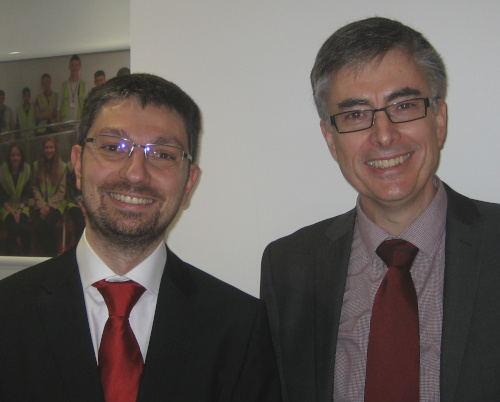
Alessandro Mogavero
PhD student, Strathclyde University, 2012-2016
Presently Cryogenics Engineer at AVIO
Alessandro joined us having already had considerable experience in the space sector working for five years at AVIO in Turin, Italy, as the engineer responsible for the ablative thermal protection system of the European Space Agency's IXV re-entry vehicle. Alessandro's work gave us one of the fundamental pieces of the modelling jigsaw that we required - a means of evaluating the performance of the advanced propulsion systems that would be required to propel our future aircraft and that could be integrated into the Hyflow computational framework.
Title of Dissertation: Towards Automated Design of Combined Cycle Propulsion
When it comes to the design of propulsion systems for hypersonic vehicles, efforts over the years have focused on one or two very specific configurations. The question arises as to whether there might be other, as yet undiscovered, configurations that might yield viable, perhaps even superior, engine designs for high-speed aircraft.
Alessandro considered how Genetic Programming could be used to explore the design space to find alternate engine configurations that might be worthy of further investigation. Interestingly his methodology suggested that only two practical candidates live within the entire spectrum of possible engine configurations that use a working fluid within a conventional thermodynamic cycle to achieve propulsive effect - the conventional ramjet/scramjet, and the hybrid rocket/ramjet. Both of these configurations have been known about and intensively studied for years - thus Alessandro's findings might be interpreted as explaining why no serious competition for these designs has emerged over the last decades as an effective alternate means of propelling these futuristic aircraft. Conversely, if other viable propulsion schemas do exist, it is likely that they will be far more exotic in nature than our conventional fuel-burning systems.
An interesting observation from Alessandro's work was how often the automated 'engine-breeding' process would go off on a tangent and produce curious or quirky solutions which were clearly hamstrung by their ancestry to be extremely maladapted to their intended purpose. In looking at these solutions more closely, it would usually be clear that the quirks in many of the engine configurations that had survived to maturity were the result of assumptions that had been embedded, usually unintentionally, in the model. After some thought, the human observer of the model's behaviour could often see the 'point' in what the computer results were trying to 'say' and come up with the sensible and viable, if not often novel, analogue solution to the problem at hand.
Thus perhaps Alessandro's greatest contribution, given the direction in which current technology seems to be moving, was to demonstrate very effectively to the proponents of Artificial Intelligence in engineering and multi-disciplinary optimisation just how essential the human is to the overall creative process. The computer is very good at generating options and alternatives according to the way that it is programmed, but the unique capability of the human to be self-aware and rational, rather than thoughtless and mechanistically algorithm-driven, is an indispensible part of filtering those options and alternatives, and indeed in applying meta-considerations such as aesthetic appeal, to achieve practical and acceptable engineering outcomes.
Indeed, the idea of "human-centred automation" has become a cornerstone of our philosophy at Sophrodyne - that when humans and computers work together in a way that acknowledges directly each partner's disparate strengths, but at the same time that also acknowledges and protects against the different limitations that are inherent in flesh and machine, then engineering outcomes can be achieved that are more economical, safer, and better adapted to serving humanity than either party could produce on their own.
Alessandro joined us having already had considerable experience in the space sector working for five years at AVIO in Turin, Italy, as the engineer responsible for the ablative thermal protection system of the European Space Agency's IXV re-entry vehicle. Alessandro's work gave us one of the fundamental pieces of the modelling jigsaw that we required - a means of evaluating the performance of the advanced propulsion systems that would be required to propel our future aircraft and that could be integrated into the Hyflow computational framework.
Title of Dissertation: Towards Automated Design of Combined Cycle Propulsion
When it comes to the design of propulsion systems for hypersonic vehicles, efforts over the years have focused on one or two very specific configurations. The question arises as to whether there might be other, as yet undiscovered, configurations that might yield viable, perhaps even superior, engine designs for high-speed aircraft.
Alessandro considered how Genetic Programming could be used to explore the design space to find alternate engine configurations that might be worthy of further investigation. Interestingly his methodology suggested that only two practical candidates live within the entire spectrum of possible engine configurations that use a working fluid within a conventional thermodynamic cycle to achieve propulsive effect - the conventional ramjet/scramjet, and the hybrid rocket/ramjet. Both of these configurations have been known about and intensively studied for years - thus Alessandro's findings might be interpreted as explaining why no serious competition for these designs has emerged over the last decades as an effective alternate means of propelling these futuristic aircraft. Conversely, if other viable propulsion schemas do exist, it is likely that they will be far more exotic in nature than our conventional fuel-burning systems.
An interesting observation from Alessandro's work was how often the automated 'engine-breeding' process would go off on a tangent and produce curious or quirky solutions which were clearly hamstrung by their ancestry to be extremely maladapted to their intended purpose. In looking at these solutions more closely, it would usually be clear that the quirks in many of the engine configurations that had survived to maturity were the result of assumptions that had been embedded, usually unintentionally, in the model. After some thought, the human observer of the model's behaviour could often see the 'point' in what the computer results were trying to 'say' and come up with the sensible and viable, if not often novel, analogue solution to the problem at hand.
Thus perhaps Alessandro's greatest contribution, given the direction in which current technology seems to be moving, was to demonstrate very effectively to the proponents of Artificial Intelligence in engineering and multi-disciplinary optimisation just how essential the human is to the overall creative process. The computer is very good at generating options and alternatives according to the way that it is programmed, but the unique capability of the human to be self-aware and rational, rather than thoughtless and mechanistically algorithm-driven, is an indispensible part of filtering those options and alternatives, and indeed in applying meta-considerations such as aesthetic appeal, to achieve practical and acceptable engineering outcomes.
Indeed, the idea of "human-centred automation" has become a cornerstone of our philosophy at Sophrodyne - that when humans and computers work together in a way that acknowledges directly each partner's disparate strengths, but at the same time that also acknowledges and protects against the different limitations that are inherent in flesh and machine, then engineering outcomes can be achieved that are more economical, safer, and better adapted to serving humanity than either party could produce on their own.
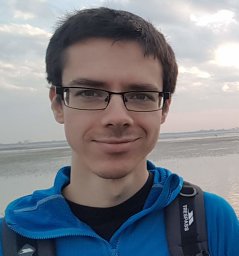
Javier Herrera Montojo
PhD student, Strathclyde University, 2013-2017
Presently Flight Dynamics Engineer at the European Space Agency
Much in the same way that a boat when underway generates a pattern of waves on the surface of the water, an aircraft makes its presence known to the oncoming airflow, once flying at supersonic speed, by radiating a roughly conical pattern of shock waves into the surrounding air. The air changes its thermodynamic properties as it passes through the shock waves, and thus the position and strength of these waves has considerable influence on the pressure, velocity and heating on the surface of the aircraft.
At very high speeds (as measured by the Mach number of the oncoming flow) these shock waves lie so close to the body that simplified methodologies, such as those that use the Newtonian Flow approximation, yield very good predictions for the pressure, velocity and heating at the vehicle surface. At lower supersonic Mach numbers, the details of the off-body flow, especially with regards the location and strength of any shock waves that might be present, have to be taken more carefully into account. The idea behind Javier's PhD was that in the middle, thus, there should be a regime where the already very economical Newtonian Flow approximation could be improved upon, by building in an easily-computable correction for the presence of the shock waves, to yield a simple and economical aerodynamic model for high, but not hypersonic, Mach numbers.
By the stage that Javier's PhD really got going, Romain Wuilbercq had finished his PhD and joined the Centre as a post-doc. He and Javier set out to exploit this idea to extend the predictions of Romain's Hyflow code from the hypersonic Mach numbers for which it was designed down to intermediate Mach numbers. We were very fortunate to obtain support for this project from Nigel Taylor at MBDA, who provided a good deal of guidance and technical input based on his years of experience in high-speed missile aerodynamics.
Title of Dissertation: Shock Estimation for Supersonic Vehicles
Javier is an especially talented geometrical modeller, and he was able to construct a procedure which, in a process somewhat analogous to a three-dimensional version of the classical Method of Characteristics, could extrapolate the surface geometry of the vehicle into a creditable representation of the off-body shock structure, including the various internal features that originated in kinks and bends in the surface geometry. The usual shock equations could then be used to correct the flow on the surface of the body to gain improved predictions of the pressure, velocity and heating compared to the Newtonian Flow approximation that had been used routinely up to then in the basic Hyflow approach. The process executed very rapidly on a simple computer, and allowed us to extend our toolbox for the preiminary design of advanced air transport vehicles to a broader range of Mach numbers than was previously the case.
Much in the same way that a boat when underway generates a pattern of waves on the surface of the water, an aircraft makes its presence known to the oncoming airflow, once flying at supersonic speed, by radiating a roughly conical pattern of shock waves into the surrounding air. The air changes its thermodynamic properties as it passes through the shock waves, and thus the position and strength of these waves has considerable influence on the pressure, velocity and heating on the surface of the aircraft.
At very high speeds (as measured by the Mach number of the oncoming flow) these shock waves lie so close to the body that simplified methodologies, such as those that use the Newtonian Flow approximation, yield very good predictions for the pressure, velocity and heating at the vehicle surface. At lower supersonic Mach numbers, the details of the off-body flow, especially with regards the location and strength of any shock waves that might be present, have to be taken more carefully into account. The idea behind Javier's PhD was that in the middle, thus, there should be a regime where the already very economical Newtonian Flow approximation could be improved upon, by building in an easily-computable correction for the presence of the shock waves, to yield a simple and economical aerodynamic model for high, but not hypersonic, Mach numbers.
By the stage that Javier's PhD really got going, Romain Wuilbercq had finished his PhD and joined the Centre as a post-doc. He and Javier set out to exploit this idea to extend the predictions of Romain's Hyflow code from the hypersonic Mach numbers for which it was designed down to intermediate Mach numbers. We were very fortunate to obtain support for this project from Nigel Taylor at MBDA, who provided a good deal of guidance and technical input based on his years of experience in high-speed missile aerodynamics.
Title of Dissertation: Shock Estimation for Supersonic Vehicles
Javier is an especially talented geometrical modeller, and he was able to construct a procedure which, in a process somewhat analogous to a three-dimensional version of the classical Method of Characteristics, could extrapolate the surface geometry of the vehicle into a creditable representation of the off-body shock structure, including the various internal features that originated in kinks and bends in the surface geometry. The usual shock equations could then be used to correct the flow on the surface of the body to gain improved predictions of the pressure, velocity and heating compared to the Newtonian Flow approximation that had been used routinely up to then in the basic Hyflow approach. The process executed very rapidly on a simple computer, and allowed us to extend our toolbox for the preiminary design of advanced air transport vehicles to a broader range of Mach numbers than was previously the case.
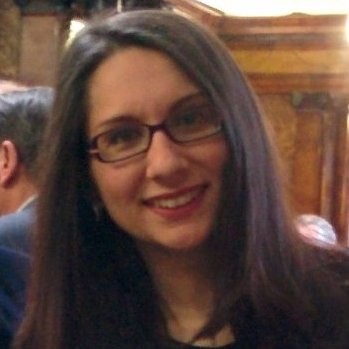
Viola Renato
PhD student, Strathclyde University, 2014-2018
Presently Thermal Engineer at Thales Alenia Space
Viola joined us fresh from completing her MSc in Aerospace Engineering at the Politecnico di Torino. We had been invited to participate in a large EU Framework-7 project called Ablamod, together with a range of participants including CIRA and AVIO in Italy, Airbus in France and the DLR in Germany, and Viola's task was to exploit our strengths in advanced fluid dynamic modelling to help improve the state of the art in characterising the performance of spacecraft heat shields.
The interaction between the physical chemistry of the vehicle surface and the gas in the flow just above, whether it be just to heat the surface or to cause its oxidation or even degradation, is an important phenomenon that needs to be considered in the design of vehicles that are intended to operate at high speeds and altitudes. The ability to represent this effect in our model framework would slot yet another piece of the overall design puzzle into place.
Title of Dissertation: Multi-Dimensional Thermal Response and Permeability Characterisation for Porous Ablative Materials
The most common type of heat shield on spacecraft that are designed to enter a planetary atmosphere is made of a material that degrades, in a process called ablation, to produce a flow of relatively cool gas near the surface of the vehicle. This layer protects it from the intense heat that is generated in the oncoming flow ahead of the vehicle during entry. Given the uncertainties inherent in the process of entering a planetary atmosphere, heat shields tend to be designed conservatively, and are thus often thicker and heavier than they need to be. An accurate model for the performance of spacecraft heat shields could help to reduce this conservatism, thus reducing weight and cost in a way that would cascade throughout the design of the spacecraft and make it more efficient as a whole.
The performance of an ablative heat shield is highly dependent on the micro-scale physical chemistry that occurs deep within the physical structure of the material, however. Given the importance of these micro-scale effects, the macro-scale performance of the entire heat shield is too expensive to calculate directly, hence multi-scale modelling is appropriate. Viola's dissertation showed how vehicle-scale aerodynamic heating calculations with a relatively simple macro model could be augmented and improved by estimating the microscopic, material-dependent parameters in the model using the results of a set of judiciously-chosen calculations that applied the Direct-Simulation Monte Carlo method at the level of the individual granules or fibres from which the heat shield was composed.
Viola's work was instrumental in bringing us yet another step closer to our overall aim of being able to model the characteristics of future air-space vehicles, and her work showcased our by now almost standard approach of augmenting simple models with detailed high-order numerical analysis only where appropriate in order to yield accurate insight into the physical behaviour of the system of interest.
Viola joined us fresh from completing her MSc in Aerospace Engineering at the Politecnico di Torino. We had been invited to participate in a large EU Framework-7 project called Ablamod, together with a range of participants including CIRA and AVIO in Italy, Airbus in France and the DLR in Germany, and Viola's task was to exploit our strengths in advanced fluid dynamic modelling to help improve the state of the art in characterising the performance of spacecraft heat shields.
The interaction between the physical chemistry of the vehicle surface and the gas in the flow just above, whether it be just to heat the surface or to cause its oxidation or even degradation, is an important phenomenon that needs to be considered in the design of vehicles that are intended to operate at high speeds and altitudes. The ability to represent this effect in our model framework would slot yet another piece of the overall design puzzle into place.
Title of Dissertation: Multi-Dimensional Thermal Response and Permeability Characterisation for Porous Ablative Materials
The most common type of heat shield on spacecraft that are designed to enter a planetary atmosphere is made of a material that degrades, in a process called ablation, to produce a flow of relatively cool gas near the surface of the vehicle. This layer protects it from the intense heat that is generated in the oncoming flow ahead of the vehicle during entry. Given the uncertainties inherent in the process of entering a planetary atmosphere, heat shields tend to be designed conservatively, and are thus often thicker and heavier than they need to be. An accurate model for the performance of spacecraft heat shields could help to reduce this conservatism, thus reducing weight and cost in a way that would cascade throughout the design of the spacecraft and make it more efficient as a whole.
The performance of an ablative heat shield is highly dependent on the micro-scale physical chemistry that occurs deep within the physical structure of the material, however. Given the importance of these micro-scale effects, the macro-scale performance of the entire heat shield is too expensive to calculate directly, hence multi-scale modelling is appropriate. Viola's dissertation showed how vehicle-scale aerodynamic heating calculations with a relatively simple macro model could be augmented and improved by estimating the microscopic, material-dependent parameters in the model using the results of a set of judiciously-chosen calculations that applied the Direct-Simulation Monte Carlo method at the level of the individual granules or fibres from which the heat shield was composed.
Viola's work was instrumental in bringing us yet another step closer to our overall aim of being able to model the characteristics of future air-space vehicles, and her work showcased our by now almost standard approach of augmenting simple models with detailed high-order numerical analysis only where appropriate in order to yield accurate insight into the physical behaviour of the system of interest.
They say that a good teacher learns at least as much from his students as they do from him, and this was undoubtedly true of my academic career. My two decades spent as a faculty member at four universities, as well as in the research labs and lecture halls of colleagues in South Korea, the United States, Italy and South Africa, was above all a voyage of joint exploration and discovery - each and every one of my students and researchers stimulated my thinking just as much as I did his or hers, and we all experimented with new ideas and approaches with enthusiasm and a thirst for knowledge. I learned a tremendous amount just by looking over my students' shoulders, and hopefully more often than not my guidance, and my suggestions as to what might work and what would (probably) not, were based on experience and growing wisdom and knowledge with the passing years. But in academia one often also just relies on the premise that if nothing is ventured, nothing will be gained. Fortune favours the prepared mind, and stepping out into the unknown on a new voyage of discovery was always an exhilarating experience.
The advantage, as their supervisor and mentor, in being slightly removed from the day-to-day grind of programming and data analysis - especially as I advanced in seniority and experience - was perhaps that I could more easily see the bigger picture, join the dots, and distil what we were doing technically into a coherent philosophy of engineering enquiry. This philosophy, as it evolved through contact with some really tough problems in aerospace engineering, came to form the basis of how we conducted ourselves as a team in order to obtain effective results of high scientific quality and technical rigour. To an extent as 'boss' I could mould the world as I would like it to be, and I am very proud to say that, with willing help, I managed to create an environment where rigorous but courteous enquiry and questioning, as well as intense cross-checking and in-depth validation of results and conclusions, were important - but above all where an open-minded fascination with what the language of mathematics has to say about the world around us was paramount.
Perhaps, somewhat paradoxically, the decline of these standards in traditional academia and their replacement with a very much more transactional approach to both teaching and scientific enquiry was the greatest motivation to set a new trajectory and to launch out on my own into the commercial world. Yet at Sophrodyne Aerospace we continue, explicitly and intentionally, a tradition of independent thought, self-reliance and careful introspection into the quality of our output in the best academic style. The greatest surprise to many is that there is no contradiction at all between this outlook and being customer-focused and responsive to industrial needs.
My students were good company during those long hours of discussion, debugging, paper-writing, and defence preparation. And it wasn't all hard work - the gallons of coffee drunk, and the many photographs from more-or-less exotic conference locations around the world attest to that! I am immensely proud of each and every one of the individuals mentioned on this page, and consider myself, above all else, privileged to have played a small part in stimulating these young minds and exposing them to the wonders of applied mathematics and aerospace engineering. Their story is indelibly part of my story.
© Sophrodyne Ltd 2015 - 2025


